
Japan: Bird flu outbreaks
29 December, 2024 This season, approximately 1.67 million birds have been culled across 15 outbreaks in 11 prefectures in Japan due to highly pathogenic avian influenza (HPAI). A recent outbreak of HPAI has been confirmed at a poultry farm in Yachiyo, Ibaraki Prefecture, eastern Japan. Read MoreH5N1 from Louisiana patient shows adaptation to human upper respiratory tract
27 December, 2024 CDC has sequenced the influenza viruses in specimens collected from the patient in Louisiana who was infected with, and became severely ill from HPAI A(H5N1) virus. The analysis identified low frequency mutations in the hemagglutinin gene of a sample sequenced from the patient, which were not found in virus sequences from poultry samples collected on the patient’s property, suggesting the changes emerged in the patient after infection. The patient was infected with A(H5N1) virus of the D1.1 genotype virus that is closely related to other D1.1 viruses recently detected in wild birds and poultry in the United States and in recent human cases in British Columbia, Canada, and Washington State. Read More
Pet food recall after Oregon cat dies from bird flu
26 December, 2024 Morasch Meats is recalling its Northwest Naturals 2lb Feline Turkey Recipe raw and frozen pet food after tests confirmed contamination with the H5N1 strain of Highly Pathogenic Avian Influenza (HPAI), which resulted in the death of an indoor cat in Washington County, Oregon. This cat was strictly an indoor cat and was not exposed to the virus in its environment. Read MoreUSDA announces interest in Salmonella vaccines for poultry
26 December, 2024 The U.S. Department of Agriculture's (USDA) Center for Veterinary Biologics (CVB) and the Food Safety and Inspection Service (FSIS) have issued a notice to inform veterinary biologics manufacturers of FSIS's interest in Salmonella vaccines for poultry.This interest arises from a proposed regulatory frame work for Salmonella in raw poultry products, released in August 2024. Currently, vaccination is the only method capable of targeting specific Salmonella serotypes, making vaccines a vital part of USDA-FSIS's strategy for controlling Salmonella. Read More

20 Big cats succumb to H5N1 at Washington shelter
25 December, 2024 Animal health officials have confirmed the presence of highly pathogenic avian influenza (HPAI) among over half of the wild felids at the Wild Felid Advocacy Center of Washington.Twenty big cats, including a half-Bengal tiger and four cougars, succumbed between late November and mid-December at the sanctuary in Washington State after becoming infected with HPAI H5N1.Three other cats have recovered, while one remains in critical condition. Read MoreH5N1 in Santa Barbara County (California) cats
23 December, 2024 The Santa Barbara County Public Health Department has confirmed two cases of H5 bird flu in domesticated cats from two separate households. After testing positive for influenza A, a rare occurrence in felines, the affected cats developed severe neurological illness and, regrettably, succumbed to the virus. Read More
L.A. County confirms H5 in additional cats
22 December, 2024 On November 22, eight cats in a single household were offered raw milk produced by Raw Farm, LLC. Subsequently, this lot of milk was recalled. A week later, seven of the cats became ill, with five either dying or being euthanized. This group includes the two cats mentioned earlier. The clinical signs exhibited were variable but progressive, including fever, lethargy, dehydration, anorexia, icterus, respiratory distress, and neurologic symptoms. Of the five deceased cats that consumed the recalled raw milk, four were tested and confirmed to be infected with H5 Bird Flu. The virus was sequenced and found to be identical to the strain identified in the raw milk they consumed. Read MoreInfectivity and persistence of Influenza A virus in raw milk
Environ. Sci. Technol. Lett. | 2024 21 December, 2024 A new study examines the infectivity and persistence of Influenza A virus (IAV) in raw milk, emphasizing the potential risks associated with the consumption of unpasteurized dairy products. This research specifically focuses on the survival of the H1N1 subtype of IAV in raw milk and its implications for public health, particularly in the context of recent outbreaks of highly pathogenic avian influenza. The study reveals that the H1N1 virus can persist in raw milk for a considerable duration, raising significant concerns regarding the safety of unpasteurized milk consumption.The virus maintains infectivity in raw milk for approximately 2.3 days, which is the time required to achieve a 99% reduction in infectivity (T99) of IAV in raw cow milk stored at 4 °C. Read More
Rare H5N1 avian influenza detected in Australian child after India travel
Emerging Infectious Diseases | 2024 19 December, 2024 A new study published in Emerging Infectious Diseases reports a case of Highly Pathogenic Avian Influenza (HPAI) H5N1 infection in a traveler returning to Australia from India. The patient, a 2.5-year-old girl, fell ill after visiting Kolkata, India, and was hospitalized upon her return to Australia. The infection was confirmed via PCR testing, and she successfully recovered following treatment with oseltamivir.Although poultry outbreaks of H5N1 are common, human infections with clade 2.3.2.1a HPAI H5N1 viruses remain rare, with only two documented cases prior to this report. Genetic analysis revealed the virus retained avian-like characteristics with no markers of mammalian adaptation, suggesting its primary risk lies with avian hosts. Read More
Avian influenza situation in Europe
19 December, 2024 In the last quarter of 2024, specifically between September 21 and December 6, a total of 657 highly pathogenic avian influenza (HPAI) A(H5N1) and A(H5N5) virus detections were reported in Europe. These detections occurred in both domestic (341 cases) and wild birds (316 cases) across 27 countries. The outbreaks in domestic birds were notably clustered in areas with high poultry density and were characterized by secondary farm-to-farm spread. Additionally, there were 67 reported outbreaks of HPAI in captive birds from 14 countries, with Moldova reporting the highest number (29 outbreaks), followed by Czechia (12), and several other countries with fewer cases. Read MoreCDC confirms first severe H5N1 case in U.S.
18 December, 2024 A patient in Louisiana has been hospitalized with a severe case of avian influenza A(H5N1), marking the first instance of severe illness linked to this virus in the United States. The Centers for Disease Control and Prevention (CDC) confirmed the case on Friday, December 13. The patient, a Louisiana resident who is over the age of 65 and has underlying medical conditions, is in the hospital with severe respiratory illness and is in critical condition.Since April 2024, there have been a total of 61 reported human cases of H5 bird flu in the U.S. Read More
Novel H5N1 virus in Live Poultry Markets, China
Wen, Feng et al. (2024) The Lancet Microbe 14 December, 2024 A correspondence published in The Lancet Microbe highlights critical findings regarding the highly pathogenic avian influenza A(H5N1) viruses, particularly their emergence in live poultry markets (LPMs) in China. The authors claim that these viruses exhibit enhanced binding affinity for human-type receptors, posing significant public health risks.A surveillance study conducted near Poyang Lake in January 2024 identified novel H5N1 viruses with enhanced binding affinity for human-type receptors in live poultry markets (LPMs) in China. These strains exhibited specific mutations in the receptor-binding site of the hemagglutinin (HA) protein, specifically D158N and N193K substitutions, which facilitate binding to human-type sialic acid receptors. Read More
Review of avian influenza in pregnancy
Emerging Infectious Diseases | 2024 13 December, 2024 A study published in *Emerging Infectious Diseases* presents a systematic review of avian influenza virus infections and their outcomes during pregnancy, underscoring the heightened risks faced by pregnant women during pandemics. Historically, pregnant women have been recognized as a vulnerable population during infectious disease outbreaks, experiencing higher rates of severe illness and mortality. This review specifically examines the implications of avian influenza, particularly the H5N1 and H5N2 strains, on maternal and fetal health, and emphasizes the necessity for proactive measures to mitigate these risks. The review synthesizes data from various studies that investigated the effects of avian influenza virus infections on pregnant women. Read More
Two cats die after drinking recalled raw milk
13 December, 2024 The Los Angeles County Department of Public Health is investigating two potential cases of H5 bird flu in cats that consumed recalled raw milk from Raw Farm, LLC.These indoor cats drank raw milk associated with a recall of raw milk and cream products before showing symptoms such as loss of appetite, fever, and neurological signs. The cats deteriorated rapidly and ultimately died, subsequently testing positive for Influenza A, which is rare in felines. Read More
Influenza A(H5N1) Spillover in Horses, Mongolia
12 December, 2024 A new study published in Emerging Infectious Diseases investigates the spillover of Influenza A(H5N1) infections in horses, with a focus on findings from Mongolia. Avian influenza viruses (AIVs) of the H5N1 subtype are well-known for their high pathogenicity in birds and their potential to affect various mammalian species. Recent surveillance has revealed a concerning rise in H5N1 infections among mammals, challenging the previously held belief that these viruses primarily act as dead-end hosts outside avian populations.The study presents evidence of H5N1 infections in horses based on serological surveys conducted between July 2021 and October 2023. Read More

Testing US dairy products for avian influenza
Suarez et al. (2024) J Food Prot. 2024 Dec 9:100431 12 December, 2024 A new study published in the Journal of Food Protection addresses concerns about the contamination of dairy products with highly pathogenic avian influenza (HPAI) viruses. Avian influenza poses risks to both animals and humans, so understanding its presence in food is crucial for food safety and public health. The study investigates the prevalence of HPAI in various dairy items sold in retail markets to assess the risk of transmission through these products. Read MoreAntibiotic use drops sharply in poultry industry
12 December, 2024 Updated research, supported by the US Poultry & Egg Association, has been released, quantifying on-farm antibiotic use in the US poultry industry. This report includes data from 2023, expanding upon previously published peer-reviewed studies, and now encompasses antibiotic usage from 2013 to 2023 for US broiler chickens and turkeys, and from 2016 to 2023 for US layer chickens. The data for turkeys and broiler chickens covers the years 2013 to 2023, accounting for 71% and 86% of annual US production, respectively. Meanwhile, the data for layer chickens spans from 2016 to 2023, representing 46% of annual US table egg production. Read More
Neurotropism and adaptation of H5N1 virus in domestic cats
Emerging Microbes & Infections | 2024 10 December, 2024 A new study published in *Emerging Microbes & Infections* examines the behavior and impact of the H5N1 avian influenza virus, particularly the clade 2.3.4.4.b variant, in domestic cats. The findings indicate that the H5N1 virus demonstrates significant neurotropism, suggesting a propensity to infect and affect the nervous system of domestic cats. This neurotropic behavior implies that the virus can establish itself within the central nervous system, which may have implications for the health of infected animals and the potential for zoonotic transmission to humans. Read MoreThe EU Zoonoses report 2023 - Salmonella
The European Union One Health 2023 Zoonoses report 10 December, 2024 Salmonellosis was the second most commonly reported food-borne gastrointestinal infection in humans in the European Union. In 2023, there were 77,486 confirmed cases of human salmonellosis, corresponding to a European Union notification rate of 18.0 cases per 100,000 population. This was an increase of 16.9% compared with the rate in 2022 (15.4 cases per 100,000 population). Read MoreAvian Influenza in Iceland
10 December, 2024 In November, a case of avian influenza H5N5 was identified in a seagull captured near Tjönun, Reykjavík’s central pond. In October, the Icelandic Food and Veterinary Authority (MAST) issued an uncertainty phase following the confirmation of H5N5 infections in two birds in North and Southeast Iceland. Read MoreThe EU Zoonoses report 2023 - Campylobacter
The European Union One Health 2023 Zoonoses report 10 December, 2024 Campylobacteriosis was the most commonly reported food-borne gastrointestinal infection in humans in the European Union. In 2023, there were 148,181 confirmed cases of human campylobacteriosis, corresponding to a European Union notification rate of 45.7 cases per 100,000 population. This was an increase of 4.3% compared with the notification rate in 2022 (43.8 per 100,000 population).The overall trend for Campylobacter human infections did not show a statistically significant increase or decrease over the 2019–2023 period. Read More

HPAI H5N1 infection in common cranes, Serbia
Frontiers in Veterinary Science | 09 Dec 2024 9 December, 2024 A new study focuses on the natural infection of common cranes (Grus grus) with the highly pathogenic avian influenza virus (HPAIV) subtype H5N1 in Serbia.The late autumn epizootic of HPAIV in 2023 resulted in substantial mortality among the migratory population of these cranes, highlighting the vulnerability of this species to viral infections. The research aims to investigate the pathological effects of HPAIV on common cranes, assess the implications for wildlife health, and emphasize the importance of surveillance and conservation efforts for these migratory birds. Read More

USDA launches national milk testing strategy
8 December, 2024 The USDA has issued a new Federal Order, along with accompanying guidance, mandating the collection and submission of raw (unpasteurized) milk samples nationwide for testing. This Federal Order introduces three key requirements Read MoreSingle mutation in bovine H5N1 HA shifts to human receptors
Lin et al., Science 386, 1128–1134 (2024) 6 December, 2024 A recent study on bovine influenza H5N1 viruses highlights a critical mutation in the hemagglutinin (HA) protein that shifts the virus's receptor-binding preference from avian to human types. This mutation is particularly concerning given recent human infections in the U.S., raising alarms about the potential for increased interspecies transmission. Read MoreWill fur farms in Finland be closed?
4 December, 2024 There is a citizens’ initiative in Finland to close all Finnish fur farms, which produce 500,000 foxes, minks, and raccoon dogs each year. As of December 2023, there are 442 member farms operating in Finland, most of which are family businesses. Ninety-five percent of these fur farms are located in the Ostrobothnia region.In the spring and summer of 2023, Finland experienced an outbreak of highly pathogenic H5N1 in over 70 fur farms, likely transmitted by seagulls. Read More
Airborne shedding of influenza A(H5N1) reflects mammalian transmissibility
Nature Microbiology | 02 Dec 2024 3 December, 2024 A new study suggests that earlier A(H5N1) viruses lacked the ability for airborne transmission due to insufficient infectious shedding, rather than the absence of necessary adaptations. The research focuses on the shedding dynamics of Influenza A(H5N1) viruses in ferrets, examining how these viruses transmit through the air and their implications for mammalian hosts. Using air-sampling techniques, the study measures the presence of infectious virus particles expelled by ferrets, offering valuable insights into the transmission efficiency of various viral strains. The findings reveal that the shedding kinetics of these viruses in the air closely align with data from ferret-to-ferret transmission studies. Read MoreUK purchases 5 million vaccine doses in preparation for potential H5N1 pandemic
3 December, 2024 The UK Government has signed a contract for over five million doses of a human H5N1 influenza vaccine to enhance the country’s preparedness for a potential H5 influenza pandemic.These vaccines, produced in Liverpool, are being stockpiled in anticipation of H5N1 bird flu potentially adapting to spread among humans, which could initiate a pandemic. Developed by the Australian-owned company CSL Seqirus (CSLS) at its main manufacturing facility in Speke, Liverpool, the factory produces millions of flu vaccine doses annually. The Liverpool plant uses traditional methods by cultivating the virus in fertilized chicken eggs before deactivating it for vaccine production. Read More
New Zealand: HPAI H7N6 at a poultry farm on the South Island
2 December, 2024 A high pathogenic strain of avian influenza has been confirmed on a commercial rural Otago free-range commercial layer chicken. Tests have identified a high pathogenic H7N6 subtype of avian influenza. Tests show the virus is unrelated to an H7 strain that was identified in Australia earlier this year. The sequencing of the virus is similar to a low pathogenicity avian influenza strain previously identified in New Zealand wild birds. Read More
The thermal stability of influenza viruses in milk
Viruses 2024, 16, 1766 29 November, 2024 Is pasteurization a safe solution for milk infected with the bird flu virus? Does the high rate of infection among dairy herds in the U.S. with the bird flu virus not endanger public health, and is the recommendation to consume pasteurized milk safe?Not according to a new study published in the journal Viruses by a group of researchers from China. The study indicates that while pasteurization can reduce the viability of influenza viruses, it does not completely inactivate them under certain conditions. Specifically, heat treatment at 72°C for 15 or 20 seconds was found to leave some residual infectious virus in milk, as evidenced by the ability to recover the virus through inoculation into embryonated chicken eggs. Read More

CDPH issues warning on raw milk after bird flu
28 November, 2024 Now it’s no longer a coincidence. The California Department of Public Health (CDPH) has issued a second warning to Californians advising against the consumption of raw milk produced and packaged by Raw Farm, LLC of Fresno County due to the detection of the bird flu virus in a second retail sample. At the state’s request, the company has initiated a voluntary recall of the affected milk. Read MoreBird flu in US dairy farms - Update
21 November, 2024 As of November 20, 2024, 616 dairy farms in the U.S. have tested positive for the bird flu virus since the first reported case on March 25, 2024. Contrary to expectations of a decline in cases following measures implemented by authorities, the number of diagnosed cases continues to rise.In November alone (up to the 20th), 181 dairy farms were confirmed positive, accounting for 29% of all cases reported since the outbreak began. Read More
California: bird flu case in a child
21 November, 2024 California has identified a possible bird flu case in a child in Alameda County who was tested for mild upper respiratory symptoms. The child, who has been treated, is recovering at home. They had no known contact with an infected animal. No person-to-person spread of the virus has been detected or is suspected. Read MoreDecoding H5N1 adaptation in mammals for human infection potential
bioRxiv | August 26, 2024 20 November, 2024 A new study investigates the human adaptive potential of the 2.3.4.4b H5N1 virus currently circulating in non-human mammals. The research focuses on understanding how this avian influenza virus has evolved in various mammalian hosts and its implications for potential human infections. By analyzing the sequences of viral proteins from infected non-human mammals - including dairy cattle, foxes, dolphins, and bears - the study assesses the presence of human-adapting mutations.Certain non-human mammals, particularly foxes, dolphins, and bears, exhibit a higher potential for human adaptation due to specific mutations in viral proteins. The study highlights the acquisition of classical human-adapting mutations, such as those in the PB2 protein, which could facilitate human infections. Read More
USDA funds $5M for antimicrobial resistance tools
19 November, 2024 The USDA’s Animal and Plant Health Inspection Service (APHIS) has awarded nearly $5 million across eight projects to enhance antimicrobial resistance (AMR) dashboard tools. These tools, developed in collaboration with universities and organizations, aim to monitor AMR trends, detect emerging resistance, and understand links between antimicrobial use and animal health practices.The dashboards will securely track AMR in livestock, poultry, and companion animals, analyze resistance patterns, and improve communication strategies. Read More
A/H5N1 outbreak in Argentine Elephant Seals suggests mammal-to-mammal transmission
Uhart et al. (2024) Nat Commun 15, 9516 17 November, 2024 A new study published in Nature Communications investigates the outbreak of highly pathogenic avian influenza (HPAI) H5N1 in marine mammals, specifically elephant seals, along the coast of Argentina from 2022 to 2023. It highlights the alarming spread of the virus among marine mammals and its connections to outbreaks in other South American countries. The study employs phylogenetic analysis of H5N1 virus genomes from various species to understand the transmission pathways and genetic characteristics of the virus. The researchers identify significant pathways of H5N1 virus spread among marine mammals in South America, emphasizing the interconnectedness of outbreaks across countries such as Argentina, Brazil, Chile, Peru, and Uruguay. Read MoreHawaii: Avian Influenza confirmed in backyard flock of birds
16 November, 2024 The United States Department of Agriculture’s (USDA) Animal and Plant Health Inspection Service (APHIS) has confirmed the presence of highly pathogenic avian influenza (HPAI) in Wahiawa duck sanctuary in Honolulu County, Hawaii. This is the first case of HPAI in domestic birds in Hawaii during this outbreak, which began in February 2022. The property involved is within the area served by the Wahiawā Wastewater Treatment Plant, where a recent detection was reported through the National Wastewater Surveillance System and is under investigation by the Hawai‘i Department of Health (DOH). Read MoreNorway: Bird flu detected in hobby bird farms in Trøndelag
16 November, 2024 The Veterinary Institute has detected highly pathogenic avian influenza (HPAI) in a hobby bird farm in Frøya municipality in Trøndelag. The birds were sampled after several hens died suddenly. Due to suspicion of illness, the Norwegian Food Safety Authority was notified and then took samples which were sent to the Veterinary Institute for analysis. At the time of sampling, 16 hens and two ducks were dead. The virus that has been detected in the samples from the birds is a H5N5 HPAI. This is the first time this subtype of the virus has been detected in domesticated birds in Norway. Several discoveries of this type of virus have been made in wild birds in Norway during October and November this year. Read MoreSweden: An outbreak of Salmonella Enteritidis with a probable link to imported eggs from Ukraine
11 November, 2024 There continue to be reports of cases of illness with Salmonella Enteritidis where Ukrainian eggs are suspected to be the source of infection. Microbiological typing of the bacterial genetic material indicates that newly identified disease cases involve infections from both known and novel variants of the bacterium. Among the affected individuals, several have purchased suspect eggs from retail stores outside of larger chains and subsequently consumed them either as soft-boiled or as unheated ingredients in various dishes. Read MoreFirst human case of H5 avian flu detected in B.C.
10 November, 2024 An individual in British Columbia (B.C.) has tested positive for avian influenza caused by the H5 influenza virus, marking the first detection of this virus in a person in B.C.This case also represents the first presumed human infection with H5 avian influenza acquired in Canada. The positive test was conducted at the BC Centre for Disease Control’s Public Health Laboratory, and samples have been sent to the National Microbiology Laboratory in Winnipeg for confirmatory testing.
The individual is a teenager from the Fraser Health region who is currently receiving care at BC Children’s Hospital. The boy presented to the emergency room on 2 November with conjunctivitis, fever, and cough. On 8 November, the patient's status deteriorated and was admitted due to acute respiratory distress. Intravenous antivirals were administered.
A public health investigation has been initiated to determine the source of exposure and identify any contacts. Read More
2nd pig on Oregon tested positive for H5N1
7 November, 2024 A report confirming the diagnosis of H5N1 in another pig in Oregon does not significantly alter the situation, as the finding pertains to a pig on the same premises where the virus was previously detected in poultry. Notably, the virus identified in this case represents a new genotype, D1.2, while the D1.1 genotype was diagnosed in poultry in Washington State.The incident in Washington was associated with a relatively widespread human infection (n=14).
Opponents of avian influenza vaccination in the current U.S. context may inadvertently contribute to the ongoing evolution of the avian influenza virus. Since the introduction of the virus into the U.S., over 100 different genotypes have been identified, an evolution that could eventually result in a more effective strain capable of infecting humans. Read More

Serologic evidence of HPAI A(H5) Infections among dairy workers
MMWR | November 7, 2024 | Vol. 73 | No. 44 7 November, 2024 A new study published in Morbidity and Mortality Weekly Report (MMWR) highlights recent serologic evidence of infections with the highly pathogenic avian influenza (HPAI) A(H5) virus among dairy workers in Michigan and Colorado during the summer of 2024.Out of 115 dairy workers surveyed, 8 (7%) showed serologic evidence of recent infection with the HPAI A(H5) virus. Among the seropositive individuals, symptoms such as fever, sore throat, runny or stuffy nose, sneezing, diarrhea, and headache were reported. Read More
Novel reassortant A/H5N1 avian influenza in Cambodia
7 November, 2024 A new study published in medRxiv share insights on the emergence of a novel reassortant clade 2.3.2.1c Avian Influenza A/H5N1 virus, which has been associated with human cases in Cambodia.After nearly a decade without reported human A/H5N1 infections, Cambodia experienced a resurgence with 16 cases between February 2023 and August 2024, all linked to the clade 2.3.2.1c virus, including a novel reassortant strain. Notably, 14 of these cases involved a novel reassortant A/H5N1 virus that combines gene segments from both clade 2.3.2.1c and clade 2.3.4.4b viruses. Read More
Annual cost of foodborne illness in Australia by food and pathogen
5 November, 2024 In 2023, Food Standards Australia New Zealand (FSANZ) commissioned the University of Melbourne and the Australian National University to estimate the annual economic burden of foodborne illness in Australia, breaking down the costs by food commodities and pathogens.The total annual cost of foodborne diseases in Australia was found to be AUD 2.81 billion. The most expensive illnesses included campylobacteriosis and its long-term effects (AUD 420 million annually), non-typhoidal salmonellosis and its sequelae (AUD 161 million), norovirus (AUD 147 million), and listeriosis (AUD 90 million). Read More
USA: Human H5 cases, 2024
1 November, 2024 Since April 2024, CDC has confirmed H5 bird flu infections in 39 people in the United States. Eighteen of these cases were associated with exposure to H5N1 bird flu-infected poultry and 20 were associated with exposure to sick or infected dairy cows. The source of the exposure in one case, which was reported by Missouri on September 6, could not be determined. All available data so far suggest sporadic instances of animal-to-human spread. Read More
Avian influenza confirmed in Utah dairies
31 October, 2024 Officials from the Utah Department of Agriculture and Food (UDAF) have confirmed the presence of highly pathogenic avian influenza (HPAI) in eight commercial dairy facilities in Cache County. The affected dairies have been placed under quarantine, prohibiting the movement of lactating cattle on or off the premises, except for those being sent directly to slaughter. Utah is now the 15th state to report HPAI H5N1 in cattle. Read MoreUS confirms H5N1 bird flu in swine for first time
30 October, 2024 The Avian influenza H5N1 virus has been detected in at least one pig at a backyard farm in Oregon, marking the first identification of the H5N1 virus in swine in the United States. The genotype is D1.2. different that the B3.13 genotype circulating in US dairy cattle. This discovery raises significant concerns among scientists and public health officials, as pigs are classified as "mixing vessels." They can become co-infected with both avian and human viruses, which facilitates genetic reassortment and the potential emergence of a new, more virulent strain that could more easily infect humans. Read MoreAvian influenza in two vaccinated duck flocks in France
30 October, 2024 Two duck farms in Noyal-Muzillac (Morbihan) have been confirmed as infected with the avian influenza virus. The flocks are currently vaccinated against Highly Pathogenic Avian Influenza (HPAI). The virus was detected on October 25, resulting in the culling of 37,500 ducks. The diagnosis was made as part of routine surveillance, with no clinical signs observed.On October 23, the first case of bird flu was reported in the Moréac region (Morbihan), affecting a flock of commercial laying hens comprising 27,500 birds. Read More
Bovine H5N1 influenza transmissible and lethal in animal models
Gu, C., Maemura, T., Guan, L. et al. (2024) Nature 28 October, 2024 A new study published in Nature investigates the transmissibility and pathogenicity of the human isolate huTX37-H5N1, derived from a bovine H5N1 outbreak, using ferrets as a model. The research reveals significant insights into the behavior of this virus and its implications for public health. The huTX37-H5N1 isolate is capable of respiratory droplet transmission in ferrets, indicating that it can spread efficiently among mammals. This transmissibility occurs regardless of the viral load used for infection, suggesting that the virus can reach sufficient levels for transmission even at lower doses. The virus is highly lethal in ferrets and mice, with infected animals exhibiting severe disease characterized by systemic virus spread. Read MoreCDC confirms 2 human cases of HPAI in Washington
25 October, 2024 CDC officials said tests have confirmed H5 infection in two Washington poultry cullers, though the virus is the D.1.1 genotype, belongs to the 2.3.4.4b clade that is circulating globally in wild birds, which is different that the B3.13 genotype circulating in US dairy cattle. Read MoreCalifornia: Additional HPAI human cases and high cattle mortality
24 October, 2024 California's Department of Public Health (CDPH) has announced a 15th human H5 detection. The U.S. Department of Agriculture’s claim that the current virus does not pose a risk to human health, even if true at the moment, overlooks the fact that the virus undergoes rapid evolution and continues to cause economic and environmental damage while significantly affecting animal welfare. Read MoreListeria alert: Nationwide recall of 12 million pounds of precooked chicken
18 October, 2024 BrucePac, a producer of precooked meat and poultry, has issued a recall of nearly 12 million pounds of ready-to-eat food items due to a potential listeria risk. The recall was initiated by BrucePac on October 9, following positive test results for Listeria monocytogenes bacteria from products inspected by the U.S. Department of Agriculture’s Food Safety and Inspection Service (FSIS). Read MoreHPAI management in domestic poultry: from reaction to prevention
Euro Surveill. 2024;29(42) 18 October, 2024 A new article (Perspective) on the management of highly pathogenic avian influenza (HPAI) in domestic poultry, published in Eurosurveillance, highlights the shift from reactive measures to proactive strategies. It emphasizes the need for policy changes in light of the recent emergence of HPAI viruses, particularly clade 2.3.4.4b H5N1 HPAI.The authors advocate for poultry vaccination as a key intervention to effectively control the spread of HPAI, ensuring the health of both poultry and wildlife. According to the authors, traditional management strategies - focusing on early detection, reactive culling, and movement restrictions - are deemed insufficient to address the challenges posed by these new viral strains. The article emphasizes the urgent need for a paradigm shift in HPAI management policies, moving from reactive to preventive strategies. Read More
Hungary: HPAI outbreaks
Source: Gain Report Number: HU2024-0004 17 October, 2024 In October 2024, animal health authorities confirmed primary outbreaks of the H5N1 strain of HPAI in five counties, mostly in Eastern Hungary, including Békés, JászNagykun-Szolnok, Csongrád-Csanád, Hajdú-Bihar, and Fejér counties:- On September 30, 2024, HPAI symptoms (increased mortality, reduced feed and water intake) emerged at a duck operation in Füzesgyarmat (Békés County), where 25,000 birds were kept. Read More
CDC human H5N1 cases update
17 October, 2024 Since April 2024, 25 human cases of avian influenza A(H5) virus infection have been reported in the United States; 26 in total since 2022. Ten of these cases were associated with exposure to H5N1 bird flu-infected poultry and 15 were associated with exposure to sick or infected dairy cows. This includes 11 cases in California. Read MoreHundreds of thousands of hens culled in Italy and the USA
17 October, 2024 Two notable, although not unique, cases of avian influenza have been reported in the United States and Italy. In Italy, 400,000 laying hens were culled at a farm in the province of Ferrara, specifically at Eurovo di Codigoro, after the highly pathogenic avian influenza (HPAI) H5N1 virus was diagnosed. In the United States, 1.8 million commercial laying hens were destroyed in Utah following the diagnosis of the H5N1 virus. Read MoreEffect of vaccination on Mycoplasma synoviae transmission in field conditions
Avian Pathology. 2024 Jun 13:1-7 16 October, 2024 A new study on the impact of vaccination in controlling the horizontal transmission of Mycoplasma synoviae in avian populations was published in Av. Path. The article titled "Quantification of the effect of vaccination on the control of horizontal transmission of Mycoplasma synoviae under field conditions" investigates the impact of vaccination on the transmission of Mycoplasma synoviae (MS) in poultry, particularly focusing on broiler and layer breeders. The study analyzes four years of monitoring data from both vaccinated and non-vaccinated flocks, assessing the incidence rates of MS and the effectiveness of vaccination in reducing horizontal transmission. Read More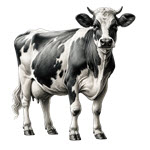
Dairy cows inoculated with HPAI virus H5N1
Nature . 2024 Oct 15 16 October, 2024 A peer-reviewed paper published in Nature investigates the impact of highly pathogenic avian influenza (HPAI) H5N1, specifically clade 2.3.4.4b genotype B3.13, on dairy cattle. Following the detection of H5N1 in a dairy cow in Texas in March 2024, a multi-state investigation revealed over 300 positive herds across 14 U.S. states. The study confirmed that HPAI H5N1 can cause severe disease in dairy cattle, leading to clinical signs such as mastitis, reduced milk production, and changes in milk quality. The initial transmission likely occurred from avian sources, with subsequent local transmission among cattle facilitated by the movement of infected animals. The virus can be transmitted to cattle through aerosol exposure or direct contact with contaminated environments or infected animals. Read MoreSweden: Salmonella enteritidis outbreak linked to imported eggs under investigation
14 October, 2024 Since the beginning of the year, several outbreaks of Salmonella Enteritidis have been reported, with epidemiological investigations indicating that consumption of imported eggs is a likely source. These eggs have been sold to individuals in smaller shops, as well as to restaurants. Many affected individuals have consumed soft-boiled eggs or dishes containing unheated eggs, such as mayonnaise and scrambled eggs. Despite multiple analyses of eggs from private individuals, shops, and restaurants, no traces of salmonella have been detected. Read MoreA third human case of H5 bird flu in California
10 October, 2024 The Centers for Disease Control and Prevention (CDC) has confirmed a third human case of H5 bird flu in California. Like the two cases in that state confirmed last week, the person reported occupational exposure to infected dairy cows. To date, all three California cases occurred in dairy workers from three different affected farms with no known contact with each other, suggesting animal-to-human spread. Also consistent with the two previous California cases, the person experienced mild symptoms, including eye redness or discharge (conjunctivitis). None of the three cases has been hospitalized. Read MoreNeurological meningoencephalitis by Streptococcus gallolyticus in turkey poults
7 October, 2024 A case report published in Avian Diseases describes neurological issues in turkey poults linked to Streptococcus gallolyticus subsp. pasteurianus. This report highlights two outbreaks in the U.S. Midwest, presenting significant findings from necropsy and histopathological examinations. The study provides important insights into the health challenges faced by poultry, contributing to the broader understanding of avian diseases. The report documents neurological issues in turkey poults associated with meningoencephalitis caused by Streptococcus gallolyticus subsp. pasteurianus. Two outbreaks were recorded in commercial turkey flocks submitted to the Veterinary Diagnostic Lab at the University of Arkansas between July and August 2023. The affected poults exhibited neurological signs, including ataxia and depression, with acute mortality observed in the flocks. Read MoreU.S. grants $72M to boost bird flu vaccine preparedness
5 October, 2024 The Biomedical Advanced Research and Development Authority (BARDA) has awarded $72 million to three vaccine companies to boost H5N1 vaccine production. CSL Seqirus, producing a cell-based vaccine, received $37.9 million, while Sanofi was granted $23.4 million and GSK $10.5 million. Read More
France, HPAI: Launch of the 2nd compulsory vaccination campaign for ducks
3 October, 2024 October 1st marks the start of the second campaign to vaccinate ducks against highly pathogenic avian influenza (HPAI) in France. The country is renewing its preventive vaccination strategy against HPAI, identical to the one deployed during the 2023/24 season, which focuses on vaccinating ducks on farms. This campaign, unprecedented at the European level, successfully vaccinated 60 million ducks over the past twelve months.This strategy has significantly reduced the number of outbreaks in livestock, with only ten cases reported during the 2023/24 campaign, compared to more than 400 in the previous season. A study by the Chair of Avian Biosecurity and Health at the National Veterinary School of Toulouse estimates that several hundred outbreaks were prevented thanks to this vaccination approach. Read More
Ireland: Salmonella and Campylobacter, Q1 2024 report
3 October, 2024 Salmonellosis: 67 cases of salmonellosis were notified in Q1 2024, decreased from 84 in Q1 2023. Where travel history was known, 50% of cases were travel-associated and 50% were domestically acquired. Among domestic cases, infection with S. Typhimurium was more common, while infection with S. Enteritidis was more common among travel-associated cases. Three outbreaks of salmonellosis were notified in Q1 2024. The most frequently seen serotypes were S. Enteritidis (30%) and S. Typhimurium (28%). 8% of isolates were from bloodstream infections. Read More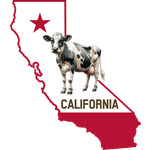
California confirms two human cases of bird flu in California
3 October, 2024 The California Department of Public Health (CDPH) announced that a dairy worker with mild symptoms who had contact with infected cows in the Central Valley has tested positive for H5N1 avian influenza in preliminary tests at a public health laboratory.The individual is a worker at a Central Valley dairy facility experiencing an outbreak of bird flu among dairy cattle. The individual experienced mild symptoms, reporting only conjunctivitis. Read More
Dynamics of H5N1 Clade 2.3.4.4b in infected cattle
Nature: 25 September 2024 1 October, 2024 A peer-reviewed paper titled 'H5N1 Clade 2.3.4.4b Dynamics in Experimentally Infected Calves and Cows' explores the behavior of the highly pathogenic avian influenza virus (HPAIV) clade 2.3.4.4b H5N1 in cattle. The research involved two independent experimental infection studies: one assessing oronasal susceptibility and transmission in calves, and the other examining the susceptibility of lactating cows following direct mammary gland inoculation. Calves inoculated with the H5N1 B3.13 strain exhibited moderate nasal viral replication and shedding but did not display severe clinical signs or transmit the virus to sentinel calves. In lactating cows, intramammary inoculation led to severe mastitis, high fever, and a significant reduction in milk production. Read MorePredicting and validating H5N1-H3N2 reassortment potential
Research Square 30 September, 2024 A new study (preprint) focuses on the reassortment potential between highly pathogenic avian influenza (HPAI) H5N1 viruses and human influenza A viruses (IAVs), specifically H3N2. The researchers developed an intelligent framework called HAIRANGE (Human Adaptive Influenza Virus Reassortment using Attentional Networks based on Genome Embedding) to predict high-risk reassortment events. This framework employs deep learning techniques to analyze genomic codons, integrating both RNA and protein information to assess the adaptive potential of these viruses. Read More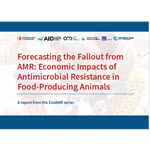
Economic impact of AMR in food-producing animals
28 September, 2024 Antimicrobial resistance (AMR) presents a severe threat to food-producing animals, food security, and the global economy, as highlighted in a recent report by the World Organization for Animal Health (WOAH).The report, based on data from 204 countries, warns that without further action to combat AMR, annual livestock production losses from drug-resistant bacteria could result in food shortages affecting 746 million people and lead to a cumulative global GDP loss of $575 billion by 2050. Cattle and poultry production would be hit hardest, particularly in low- and middle-income countries. Read More
Attributing Campylobacter infections in the US using machine learning: A retrospective analysis
27 September, 2024 A new study published in the Journal of Infection investigates the sources of Campylobacter infections in the United States using genomic data and machine learning techniques. It analyzes 8,856 Campylobacter genomes from human infections and 16,703 from potential sources collected during national surveillance from 2009 to 2019. Read MoreThe global spread of H5N1 influenza in mammals
25 September, 2024 The article "The Global H5N1 Influenza Panzootic in Mammals," published in Nature, provides a comprehensive review of the recent spread and impact of the H5N1 influenza virus among mammalian populations worldwide.The H5N1 virus has shifted from primarily affecting birds to infecting a diverse array of mammals, including marine and terrestrial species. This shift raises concerns about the virus's adaptability and its potential for further spread. The review highlights instances of sustained transmission of H5N1 among mammals, particularly in Europe, among marine mammals in South America, and in dairy cattle in the United States, raising concerns about its potential to adapt further and possibly infect humans. Read MoreSalmonella and eggs
Source: https://www.wmtw.com/ 21 September, 2024 The Maine Department of Agriculture, Conservation and Forestry (DACF) is ordering a recall of eggs from Rainbow Farm in Orland following a salmonellosis outbreak. The Maine Center for Disease Control and Prevention has identified the consumption of these eggs as the source of the outbreak.At least five people have gotten sick and tested positive for salmonellosis after eating eggs from the farm. Read More
USA: New autogenous aMPV vaccines
11 September, 2024 The MSD Animal Health company recently announced that the United States Department of Agriculture (USDA) has approved the production and sale of an experimental autogenous vaccine, developed by Cambridge Technology, targeting avian metapneumovirus (aMPV) type B. This strain has been impacting turkeys, broilers, and layers since November 2023. Cambridge Technology specializes in the development of autogenous vaccines, utilizing advanced biotechnologies to tailor vaccines to the specific needs of livestock farms. The company operates a production facility in Minnesota, USA. Read MoreNew Zealand: Salmonella and Campylobacter foodborne illness data - 2023
11 September, 2024 Salmonella: During 2023, 827 individual cases (15.8 per 100,000 population) of salmonellosis were reported in New Zealand. Of the 218 hospitalised cases (4.2 hospitalised cases per 100,000 population) recorded in 2023, 161 cases were reported with salmonellosis as the principal diagnosis and 57 were reported with salmonellosis as another relevant diagnosis. In 2023, isolates from 827 notified cases with non-typhoidal Salmonella infections were typed by the ESR Enteric Reference Laboratory. S. Typhimurium (237 cases) and S. Enteritidis (92 cases) were the most common serotypes identified. Read MoreMass vaccination and reduced prevalence of LP H7N9 in China
Virulence 2024, Vol. 15, No. 1, 2395837 10 September, 2024 A new study investigates the evolutionary dynamics of H7N9 avian influenza viruses, particularly focusing on the differences between low-pathogenic (LP) and highly pathogenic (HP) strains in the context of vaccination efforts in China. The study found that LP H7N9 viruses underwent conserved evolution since 2016, resulting in limited genetic diversity and low fitness. This lack of significant adaptive mutations made them more susceptible to elimination through vaccination. The introduction of a recombinant bivalent H5/H7 vaccine (H5N1 Re-8 and H7N9 Re-1) in 2017 was a strategic response to widespread outbreaks of H7N9. The vaccination campaign significantly reduced the prevalence of LP H7N9 in poultry and associated zoonotic infections in humans, demonstrating the effectiveness of targeted vaccination strategies. The research highlighted a strong correlation between the implementation of mass vaccination campaigns and the decline in LP H7N9 prevalence. Read More
Missouri: Human H5 avian influenza case
8 September, 2024 CDC has confirmed a human case of avian influenza A(H5) ("H5 bird flu") reported by the state of Missouri. The case was identified through that state's seasonal flu surveillance system.Missouri DHSS reports that the patient, who was hospitalized, had underlying medical conditions, was treated with influenza antiviral medications, subsequently discharged, and has recovered. There is no immediate known animal exposure. Read More
Opinion: Advancing H5 influenza vaccines against pandemic threats
JAMA Published online September 4, 2024 8 September, 2024 Three international vaccine and public health experts recently published a viewpoint opinion article in JAMA, addressing the global threat of H5N1 influenza. The experts cautiously, but optimistically, discuss the use of vaccines to fight avian influenza, specifically H5N1, in humans. They note that there are FDA-licensed H5N1 vaccines available. However, these vaccines were developed using older virus strains, and their effectiveness can vary depending on how well they match the circulating strains. The experts highlight the importance of stockpiling vaccines to ensure quick access to high-risk populations during a pandemic. One proposed strategy is to prioritize "investing in immunity" through pre-pandemic immunization. Read MoreUSA: Salmonella outbreak linked to eggs
7 September, 2024 An ongoing outbreak of Salmonella Enteritidis infections has been linked to eggs produced by a poultry farm in Wisconsin.The Centers for Disease Control and Prevention (CDC) are currently investigating this outbreak, which has already affected 65 individuals across nine states. 24 patients have been hospitalized. Laboratory evidence has revealed that the strain of Salmonella causing the outbreak matches the Salmonella found at Milo's Poultry Farm in Bonduel, WI. Read More
France is going to start its second AI H5N1 vaccine campaign
4 September, 2024 France is preparing to initiate its second commercial vaccination campaign against Avian Influenza H5N1, a major step to safeguard its poultry sector. The first campaign, which saw the immunization of over 50 million ducks, proved successful, and this one is slated to start on October 1, 2024. In the fight against avian influenza, the first vaccination campaign - which was started in 2023 - was a historic endeavor. Millions of ducks were vaccinated by the French government in association with renowned pharmaceutical companies. Along with aiding in the virus's containment, this effort offered insightful information about the practicality and efficacy of mass vaccination campaigns. Read MoreHPAI virus exposure in goats and sheep in Pakistan
bioRxiv preprint | 2024 3 September, 2024 A new study from Pakistan investigates the seroprevalence of influenza A and B viruses in goats and sheep in Punjab Province, Pakistan, with a particular focus on highly pathogenic avian influenza (HPAI) subtypes. A total of 794 serum samples were collected from goats (n=459) and sheep (n=335) between May and October 2023, primarily from areas near commercial chicken farms. The study found varying seroprevalence rates of influenza A and B viruses among the sampled goats and sheep across different geographical locations in Punjab. The sera were tested against 12 different influenza A and B virus antigens, including several HPAI subtypes such as H5N1, H5N8, H7N9, and H9N2, as well as seasonal human influenza strains. Read More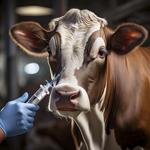
USA: Field trial of an H5N1 vaccine for cattle
31 August, 2024 USDA Secretary Vilsack announced at the Farm Progress Show in Boone, IA that this week he has authorized the first field trial of an H5N1 vaccine in Cattle.The Center for Veterinary Biologics (CVB) recently added a new notice to its website regarding licensure applications for products used to vaccinate livestock for Highly Pathogenic Avian Influenza (HPAI) H5N1, and the authorization of a field trial under specific conditions. Read More
The effects of duck vaccination against HPAI in France
30 August, 2024 In a new study published in bioRxiv preprint (not yet peer-reviewed), discusses the promising effects of a duck vaccination campaign against highly pathogenic avian influenza (HPAI) H5 clade 2.3.4.4b in France. France implemented a vaccination campaign for domestic ducks using inactivated vaccines and mRNA vaccines, with over 35 million ducks receiving two doses and 1.5 million receiving three doses by July 2024. The duck vaccination campaign utilized two types of vaccines:an inactivated vaccine (Volvac B.E.S.T) and a self-amplifying mRNA vaccine (RESPONS AI H5) developed by Ceva Animal Health.
The inactivated vaccine was administered in two doses at 10 and 28 days, with a third dose given at 56 days in high-risk zones and during high-risk winter periods. The mRNA vaccine was added to the vaccination campaign starting in May 2024. Read More
FSIS to start H5N1 beef monitoring sampling
24 August, 2024 On September 16, 2024, FSIS will be adding H5N1 influenza A monitoring in dairy cows at slaughter to its already robust national surveillance programs for pathogens and chemical contaminants. FSIS will leverage its existing National Residue Program (NRP) and conduct H5N1 sampling in the muscle samples of dairy cow carcasses already collected for this program. Samples will be tested by FSIS laboratory personnel using polymerase chain reaction (PCR) testing. Carcasses sampled under the NRP are held by establishments pending results of residue testing. Read MoreU.S. Dairy, Turkey, and Egg Industries advocate for preventive H5N1 vaccination
24 August, 2024 In an August 16th letter to USDA Secretary of Agriculture Tom Vilsack, key representatives from the U.S. dairy, turkey, and egg industries urged the USDA and its federal partners to expedite the development of safe and effective HPAI vaccines for dairy cows, turkeys, and egg-laying hens. These vaccines are seen as crucial for mitigating the spread of H5N1 within dairy herds and reducing the risk of highly pathogenic avian influenza (HPAI) spilling over into commercial turkey flocks and egg-laying operations.The industries' concerns about the federal response come in the wake of HPAI outbreaks that began in February 2022, which have devastated poultry production and affected over 100 million birds to date. Read More
EDS'76 in a U.S. broiler breeder flock
Av Dis 2024 20 August, 2024 A new study describes the first case of Egg Drop Syndrome 76 (EDS’76) in broiler breeders in the United States. The affected farm consisted of four houses with approximately 35-week-old hens, which experienced a 15% drop in egg production over the course of a week. The initial signs were noted in House 4, with subsequent impacts observed in the other houses. The investigation revealed numerous shell-less, wrinkled, and pale eggs, but no increases in mortality or respiratory signs were reported.Diagnostic methods included PCR and hemagglutination inhibition (HI) testing, which confirmed the presence of EDS’76. Communication with local producers indicated nearby cases of EDS’76 in commercial egg layers, suggesting potential environmental exposure. Read More
Ille-et-Vilaine, France: an outbreak of HPAI detected in a poultry farm
19 August, 2024 For the first time since January, an outbreak of bird flu was detected in a poultry farm in Ille-et-Vilaine, the Ministry of Agriculture announced on Tuesday, August 13. This first outbreak comes in the wake of the wildlife cases observed along the Breton coast in recent weeks. The main hypothesis is contamination via wild fauna. Indeed, this outbreak is located near an area naturally exposed to contamination via wild fauna, while several cases have been observed in seabirds along the Breton coast in recent weeks. Starting in October of last year, the French authorities began an HPAI vaccination campaign, which aimed to protect the nation’s commercial duck flocks from future outbreaks. Read More17 People sick in Salmonella outbreak linked to eggs
11 August, 2024 Seventeen people have suffered from food poisoning after dining at the Hundred hamburger restaurant, which is operated by the ‘gourmet’ Hundred Burgers chain in Madrid. Hundred Burgers was recently voted the second-best burger restaurant in the world according to the ‘The World’s 25 Best Burgers’ survey. Read MoreAustria: foodborne outbreaks in 2023
Source: Austrian Agency for Health and Food Safety (AGES) 10 August, 2024 In 2023, a total of 42 foodborne disease outbreaks were reported, 14 more than in 2022. A total of 222 people were affected by these outbreaks, more than twice as many as in 2022 (128 people), but significantly fewer than in 2019 (793 people) in pre-COVID-19 times. Of those affected, 38 people were hospitalized (2022: 57; 2021: 27; 2020: 17; 2019: 159), and there was one death (2022: 4 deaths; 2021: 2 deaths; 2020: no deaths; 2019: 1 death). The average number of people affected per outbreak was 5.3, with the number of people affected per outbreak ranging from 1 to 32. One individual is associated with a cross-country outbreak that began in 2022. Once again, the number of household outbreaks in 2023 was higher (n = 25) than that of general outbreaks (n = 20), and there were two outbreaks with unknown status. Read MoreFinland: Avian influenza vaccinations for at-risk populations underway
6 August, 2024 In accordance with the recommendations of the Finnish Institute for Health and Welfare (THL), a vaccination program against avian influenza (bird flu) has commenced for individuals in high-risk occupational groups aged 18 and over.The vaccination regimen consists of two doses administered at least three weeks apart. The vaccine, based on the H5N8 strain, has been supplied in a batch of 20,000 doses, which are valid until the end of September 2024. Consequently, the initial dose must be administered this month.
Vaccination is voluntary and exclusively available to those identified as being in risk groups. Read More
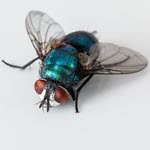
Blowflies are potential vector for avian influenza virus at enzootic area in Japan
3 August, 2024 Researchers from Kyushu University have discovered that blowflies, a family of flies strongly attracted to decaying flesh and feces, are carrying the bird flu virus in southern Japan. Their findings, published in Scientific Reports, introduce a potential new route of transmission for bird flu and highlight the need to develop new countermeasures to prevent and control the disease in poultry farms.In this research, the scientists studied a wild crane colony in Izumi city, Kagoshima Prefecture, in southern Japan. In winter, the prime season for avian influenza, thousands of cranes migrate to this area, with their dense numbers making them vulnerable to infection. During winter 2022-2023, 1,600 cranes out of colony of 10,000 cranes died from bird flu. The researchers collected 648 blowflies and discovered that 14 blowflies were carrying the bird flu virus. Read More
Bovine H5N1 HPAI virus shows weak binding to human-type sialic acid receptors
3 August, 2024 Researchers from the University of Pennsylvania and the Scripps Institute have posted a preprint on the bioRxiv server (August 2, 2024). Their study provides reassuring evidence that the bovine B3.13 genotype of H5N1 binds poorly to human (α2,6-linked) receptor cells.The study suggests that the bovine H5N1 virus has maintained strict specificity for binding to avian-type receptors and clade 2.3.4.4b H5N1 viruses bind poorly to human receptors. Previous studies suggest that several HA mutations are needed to substantially change the specificity of the H5N1 virus to human-type receptor specificity (Thompson et al., 2021). Read More
Eurosurveillance: Strain-dependent H5N1 replication in bovine cells
2 August, 2024 A recent study on the European clade 2.3.4.4b influenza A(H5N1) viruses highlights the differences in how these viruses replicate in bovine cells and their thermal stability in whole and semi-skimmed milk. The study found notable variations in thermal inactivation and replication efficacy, which are crucial for understanding the safety of milk products.The study demonstrated that the thermal inactivation of the viruses varied significantly depending on the strain and the fat content of the milk. For instance, while all viruses were undetectable after treatment at 75°C for 30 minutes, residual infectious virus was detected after 30 minutes at 56°C in whole milk for three strains and in semi-skimmed milk for one strain. Read More
Campylobacteriosis in Sweden
2 August, 2024 According to Folkhälsomyndigheten (the Public Health Agency of Sweden), during the first two weeks of July (July 1 - July 14), the number of reported cases of Campylobacter infection in Sweden increased to nearly 100 cases per week. In the following two weeks (July 15 - July 28), the number of reported cases increased further, reaching 160 and 210 cases per week, respectively. These cases have been found in several regions. Read MoreUSDA proposes new policy for salmonella in raw poultry
29 July, 2024 The U.S. Department of Agriculture’s (USDA) Food Safety and Inspection Service (FSIS) issued a comprehensive proposed rule and determination to more effectively reduce Salmonella contamination and illnesses associated with raw poultry products. FSIS is proposing final product standards that would define whether certain raw poultry products contaminated with certain Salmonella levels and serotypes are adulterated as defined in the Poultry Products Inspection Act (PPIA) (21 U.S.C. 451 et seq.). Specifically, FSIS has tentatively determined that raw chicken carcasses, chicken parts, comminuted chicken, and comminuted turkey are adulterated if they contain any type of Salmonella at or above 10 colony forming units/per milliliter or gram (10 cfu/mL(g)) in analytical portion (i.e., mL of rinsate or gram of product) and contain any detectable level of at least one of the Salmonella serotypes of public health significance identified for that commodity. Read MoreTransmission of HPAI H5N1 virus to dairy cattle
Nature | 2024 27 July, 2024 A new study from *Nature* provides an in-depth analysis of the clinical, pathological, and epidemiological aspects of the unprecedented spillover of the highly pathogenic avian influenza (HPAI) H5N1 virus into dairy cattle herds across multiple states in the U.S.The study documents the clinical signs observed in infected cows, which include reduced feed intake, altered fecal consistency, respiratory distress, and a significant decrease in milk production, often accompanied by abnormal milk color and consistency. The virus was detected not only in milk but also in various tissues, with a notable tropism for the mammary gland's epithelial cells. Read More
CDC: Three human cases of H5 Bird Flu
26 July, 2024 Three additional human cases of highly pathogenic avian influenza (HPAI) A(H5) (“H5 bird flu”) virus infection have been confirmed by the Centers for Disease Control and Prevention (CDC) in association with a second poultry farm in Northeast Colorado/Weld County. The three confirmed cases occurred in people who were working directly with infected poultry at a commercial egg layer operation that had reported an outbreak of H5 bird flu among poultry. All three people have mild illness. Read MoreUSA: more human cases of H5N1
26 July, 2024 The US CDC reported more human cases of A(H5N1) avian influenza virus among workersexposed to infected poultry as part of the response to the ongoing outbreak at a commercial egg layer operation in Colorado.
The virus was characterised as genotype B3.13 clade 2.3.4.4b HPAI A(H5N1) and it was closely related to the recent poultry outbreaks and infected dairy cattle herds.
The virus maintains avian genetic characteristics and lacks adaptations for human infection. However, a specific change at PB2 M631L suggests mammalian adaptation. Read More

Brazil reports Newcastle disease in Rio Grande do Sul
20 July, 2024 On 17 July 2024, Brazil has declared the outbreak of Newcastle Diseases (ND) in a chicken farm in Rio Grande do Sul state (the third largest exporter of chickens in Brazil), after the death of 7000 birds. The 2024 ND outbreak represents the first major occurrence since the last outbreak in 2006. Read MoreColorado: 1.3M hens to be culled due to HPAI
18 July, 2024 Colorado is reporting an avian flu incident at a 1.3 million-bird laying farm in Weld County. This incident follows a report earlier this month of a farm with over 1.8 million layers also testing positive for the H5N1 bird flu virus. Read MoreHPAI detected in Oklahoma dairy herd
16 July, 2024 The USDA Animal and Plant Health Inspection Service (APHIS) has confirmed a case of Highly Pathogenic Avian Influenza (HPAI) in an Oklahoma dairy herd.The positive sample was collected by the dairy in April and recently submitted to USDA APHIS for testing. The dairy herd has fully recovered, and the farm has not reported any other cases of HPAI.
the USDA APHIS said 157 H5N1 outbreaks have now been confirmed in 13 states. Read More
Health officials confirm human cases of avian flu in Colorado poultry workers
15 July, 2024 In coordination with the Colorado Department of Agriculture, the State Emergency Operations Center, and Centers for Disease Control and Prevention, the Colorado Department of Public Health and Environment is now reporting a total of five human cases of avian influenza in workers responding to the avian flu outbreak at a commercial egg layer operation. CDC has confirmed four of the cases, and one additional case is presumptive positive and pending confirmation at CDC. Read MoreThe Finnish Food Agency investigates causes of incorrect salmonella result
10 July, 2024 In May, a self-monitoring sample of chicken from Lappeenranta was found to contain Salmonella at the Helsinki laboratory of Eurofins Scientific Finland Oy. Later, it was discovered that the Salmonella result was incorrect, as the sample had been contaminated with Salmonella bacteria in the laboratory. The contamination occurred due to the sample coming into contact with a reference measurement sample processed at the same time. This was confirmed by the Food Agency's whole-genome sequencing study, which compared the genomes of Salmonella bacteria isolated from the chicken sample and the reference measurement sample. The serotype was identified as Salmonella Oranienburg. Immediately after the suspicion arose, a sales ban on eggs and chickens was ordered to prevent the spread of the disease. Read MoreIncreased detection of foodborne pathogens in US
MMWR: Weekly / July 4, 2024 / 73(26);584–593 10 July, 2024 A recent foodborne illness surveillance report in the United States reveals that the nation is not achieving its disease-reduction targets. This shortfall may be attributed to the growing use of culture-independent diagnostic tests (CIDTs), which enable the detection of infections that might have gone unreported in the past. In 2023, FoodNet identified 29,607 infections, 7,234 hospitalizations, and 177 deaths overall related to foodborne pathogens. During 2023, the incidence of domestically acquired campylobacteriosis was notable. A total of 8,454 Salmonella infections were reported. The incidence of nonserotyped infections increased substantially. The incidences of the most frequently reported serotypes, S. Enteritidis and S. Newport, remained stable compared to the period from 2016 to 2018. In contrast, the incidences of the next-most frequently reported serotypes, S. Typhimurium, S. Javiana, and S. I 4,[5],12:i:-, decreased substantially. Read More1.8 Million layers to be culled in Colorado avian influenza outbreak
10 July, 2024 Nearly 1.8 million chickens will be culled after bird flu was detected at an egg-laying operation in Weld County. This mass culling is the second-largest in a commercial flock since bird flu was first identified in Colorado in early 2022. In June 2022, an outbreak at a commercial poultry facility, also in Weld County, led to the culling of over 1.9 million birds. Read MoreAddressing current turkey respiratory health challenges: Avian Metapneumovirus
Dr. Steven Clark 9 July, 2024 Avian Metapneumovirus (aMPV), also known as Swollen Head Syndrome (SHS), Avian Rhinotracheitis (ART), Turkey Rhinotracheitis (TRT), or Avian Pneumovirus (APV), has been reported in turkeys, turkey breeders, broilers, broiler breeders, commercial egg layers, and layer breeders. The first Subtype B outbreak was observed in Fall/Winter 2023 in North Carolina, alongside suspicions of Subtype A in California.Currently, Subtype B has been confirmed in turkeys, broiler chickens, breeders, egg-layer chickens, and breeders across NC, SC, GA, VA, WV,PA, DE, and MI. Subtype A was first confirmed in CA (turkeys) and TX (broilers and breeders). "Confirmed" positive cases require two or more positive tests, including clinical signs, serology, PCR, and histopathology. By May, aMPV had spread through Midwest poultry states from Arkansas to Minnesota, with the most recent confirmation in an Iowa turkey flock with Subtype A. Read More
Pathogenicity and transmission dynamics of bovine H5N1 influenza virus
9 July, 2024 A new study on the pathogenicity and transmissibility of the bovine H5N1 influenza virus has been published in Nature. This paper provides valuable insights into the characteristics and potential impact of this virus. The bovine H5N1 virus isolated from infected cow milk showed systemic spread in mice and ferrets, reaching the mammary glands of both species. The tropism of the bovine H5N1 virus was similar to that of an older HPAI H5N1 virus isolate. The bovine H5N1 virus bound to sialic acids expressed in human upper airways. The virus transmitted inefficiently to exposed ferrets, with only one out of four exposed ferrets seroconverting without virus detection, suggesting limited transmissibility. The Cow-H5N1 virus bound to both α2,3- and α2,6-linked sialic acids, indicating that the Cow-H5N1 virus may have the ability to bind to cells in the upper respiratory tract of humans. This is of concern as it suggests a possible increase in the potential of this virus to infect other mammals Read MoreAvian influenza in Victoria, Australia
8 July, 2024 Agriculture Victoria is responding to the detection of avian influenza at eight poultry farms in Victoria. Seven properties near Meredith have been infected with the highly pathogenic avian influenza (HPAI) strain H7N3. Additionally, a property near Terang has been infected with the HPAI strain H7N9. Read More
HPAI H7N5 in Germany
4 July, 2024 Germany is reporting an outbreak of HPAI H7N5 at a laying farm (91,000 birds) in Bad Bentheim, on their border with the Netherlands. Clinical signs in affected animals included reduced feed intake, listlessness and edematous head appendages prior to acute death within hours to 2-3 days after onset. Within two days mortality amounted to 6.000 hens (7%) before the remaining birds were culled and safely disposed of without delay. Read MoreCDC: 4th human case of H5N1
3 July, 2024 The Centers for Disease Control and Prevention (CDC) confirmed the fourth human case of highly pathogenic avian influenza in the United States this year and the first in Colorado. Previous human cases occurred in Texas (1) and Michigan (2).The Colorado patient is a dairy worker who was being monitored due to exposure to H5N1 virus-infected cattle. Read More
H5N1 clade 2.3.4.4b replication in bovine airway cells
Journal of General Virology 2024;105:002007 27 June, 2024 A new study investigates the replication of highly pathogenic avian influenza (HPAI) H5N1 viruses in differentiated bovine airway epithelial cells cultured at the air-liquid interface. The study demonstrates that European H5N1 viruses can replicate in bovine airway cells, with rapid increases in viral genome loads and infectious virus observed within 24 hours post-inoculation. Importantly, infected cells remained detectable three days post-inoculation without significant damage, indicating sustained viral replication. These findings suggest that multiple lineages of HPAI H5N1 have the potential to infect the respiratory tract of cattle, highlighting the importance of extending avian influenza surveillance to ruminants. Read MoreHong Kong: Grand Hyatt hit by Salmonella outbreak
25 June, 2024 Hong Kong health authorities are investigating a salmonella outbreak linked to multiple restaurants at the Grand Hyatt hotel, affecting over a dozen diners and leading to a swift response from food safety officials.The Centre for Health Protection (CHP) announced on June 21 that they had identified eight food poisoning clusters involving 15 individuals who consumed vanilla-flavored ice cream at the Grand Hyatt between June 1-2. All affected individuals sought medical treatment, with four requiring hospitalization before being discharged. Laboratory tests confirmed the presence of Salmonella enteritidis in stool samples from six diners, prompting an immediate investigation by food safety authorities. Read More
H5N1 risk to dairy cows extends beyond US herd subtype
22 June, 2024 The Friedrich-Loeffler-Institut (FLI; Germany) is conducting an infection study to assess the susceptibility of dairy cows to the highly pathogenic avian influenza virus H5N1 (HPAIV H5N1). Initial findings indicate that both a US isolate (B3.13) and a recent H5N1 virus from a wild bird in Germany can replicate effectively in the udder. When the udder was directly infected through the teats, the dairy cows exhibited noticeable symptoms, including a significant reduction in milk production, altered milk consistency, and fever. Read MoreHPAI H5N1 Infections on Finnish fur farms linked to gull mortalities, July-Oct 2023
22 June, 2024 From July to October 2023, Finland experienced an outbreak of highly pathogenic avian influenza (HPAI) H5N1 on fur farms. Finland is a major producer of furs, rearing 1.5–2 million animals annually. Of these, half are foxes, 41% are minks, 9% are raccoon dogs, and less than 0.1% are sables. Most farms breed more than one species, and according to the Central Database for Animal Keepers and Establishments maintained by the FFA, there are approximately 450 fur animal holdings. A new study published in Eurosurveillance analyzed the outbreak to identify the source(s) of the infection and possible transmission routes. The HPAI H5N1 virus was detected on 27 fur farms and was found to belong to the genotype circulating in wild birds in the same area. This suggests that the outbreak was likely caused by direct contact with infected wild birds, followed by virus transmission within and between farms, as indicated by genomic and epidemiological data. Read More
Vaccinating risk groups against H5 in Finland
Eurosurveillance | Volume 28, Issue 29 Issue 25,20/Jun/2024 22 June, 2024 In July 2023, an outbreak of HPAI A(H5N1) caused by clade 2.3.4.4b genotype BB was detected on fur farms in Finland. Intensified surveillance activities identified 27 RT-PCR A(H5N1) - positive fur farms in western Finland. The outbreak, which affected nearly half a million farmed fur animals - mainly foxes and minks - was contained by the end of the year. Phylogenetic analyses indicated several initial introductions of genotype BB clade 2.3.4.4b viruses through large-scale exposure of fur animals to infected wild birds. Genomic analyses further revealed several mutations indicative of early mammalian adaptation of the viruses in their mammalian hosts. Animals on the affected farms were eventually culled. The culling of 485,000 animals on a total of 72 farms resulted in compensation for lost income amounting to 50.7 million EUR to the owners of the affected farms, as estimated by the Finnish Food Authority. Read MoreH7N8 hits another farm near Sydney
22 June, 2024 A second outbreak of HPAI has been detected at a commercial egg farm in Sydney's Hawkesbury region. Testing by a NSW biosecurity team confirmed that a second farm, also a commercial egg farm located within the locked-down area, had identified cases of the disease. The CSIRO's Australian Centre for Disease Preparedness confirmed a positive result for the H7N8 strain of highly pathogenic avian influenza (HPAI). Read MoreHPAI H7N8 in NSW, Australia
19 June, 2024 The New South Wales (NSW) Government has announced an outbreak of highly pathogenic avian influenza (HPAI) H7N8 at a poultry egg farm in the Hawkesbury district. This H7N8 strain is distinct from the one currently affecting Victoria. Read MoreIB: Vaccine recombinants and chicken-selected subpopulation
Av Dis 68:89–98, 2024 17 June, 2024 A new study discusses the emergence of novel variants of the infectious bronchitis virus (IBV) as a result of vaccine subpopulation selection and recombination events between vaccine and field strains. According to this study, vaccine subpopulations play a significant role in the emergence of novel variants of IBV by contributing to the selection of virulent viruses through recombination events and mutations. These factors lead to continuous disease outbreaks in poultry, causing economic losses in the industry. Read MoreCDC: U.S. population Immunity to A(H5N1) clade 2.3.3.4b viruses
16 June, 2024 CDC analyzed sera collected from people of all ages in all 10 HHS regions. Blood samples were collected during the 2022-2023 and 2021-2022 flu seasons. These samples were challenged with H5N1 virus to see whether there was an antibody reaction. Data from this study suggest that there is extremely low to no population immunity to clade 2.3.4.4b A(H5N1) viruses in the United States. Antibody levels remained low regardless of whether or not the participants had gotten a seasonal flu vaccination, meaning that seasonal flu vaccination did not produce antibodies to A(H5N1) viruses. This means that there is little to no pre-existing immunity to this virus and most of the population would be susceptible to infection from this virus if it were to start infecting people easily and spreading from person-to-person. Read MoreSeventh Australian poultry farm hit by HPAI outbreak
16 June, 2024 Highly pathogenic avian influenza (HPAI) has now been detected at a seventh poultry farm in the vicinity of Melbourne. Six of these farms are affected by the H7N3 strain, while the seventh is dealing with the H7N9 strain. Among the infected properties are six egg farms and one duck farm. Read MoreInactivation of Avian Influenza A(H5N1) virus in raw milk at 63°C and 72°C
15 June, 2024 Molecular testing identified HPAI A(H5N1) genetic material in about 20% of samples from retail pasteurized milk products. However, researchers have been unable to culture the virus from these samples. In a recent study, scientists from the National Institute of Allergy and Infectious Diseases (NIAID) assessed the stability of the HPAI A(H5N1) virus in raw milk at 63°C and 72°C, the temperatures commonly used in commercial pasteurization. Their findings were published in a letter in the New England Journal of Medicine. Heating milk to 63°C resulted in a tenfold decrease in H5N1 levels after 2.5 minutes, indicating that the standard bulk pasteurization process of 30 minutes at 63°C provides a significant safety margin. Read MoreUSA: H5N1 in dairy herds, a field epidemiologic summaries
National Epidemiologic Brief 14 June, 2024 Questionnaires revealed potential risk factors and transmission routes for infections in dairy cattle.Animal movement
>20% of farms received cattle within 30 days of clinical signs; and >60% of farms continued to move animals off the farm after onset of clinical signs.
Shared transportation vehicles
>50% of farms used trucks and trailers that are shared with other farms to transport livestock within 30 days prior to onset of clinical signs; and >50% of farms that used shared vehicles do not clean vehicles prior to use.
Shared transportation vehicles
>50% of farms used trucks and trailers that are shared with other farms to transport livestock within 30 days prior to onset of clinical signs; and >50% of farms that used shared vehicles do not clean vehicles prior to use. Read More
Epidemiological studies of HPAI in Michigan dairy herds and poultry flocks
14 June, 2024 In early April 2024, the Michigan Department of Agriculture and Rural Development (MDARD) invited a USDA Epidemiological Strike Team into Michigan to investigate the links between HPAI affected dairy premises and evidence of spillover into poultry premises. A new report summarizes the findings from field epidemiological investigations of disease spread between premises for 15 dairy herds and 8 poultry flocks confirmed with HPAI genotype B3.13 in Michigan.After interstate animal movement initially introduced the HPAI genotype B3.13 virus into a Michigan dairy, continued disease transmission within the state is determined to be multifactorial. Transmission between farms is likely due to indirect epidemiological links related to normal business operations such as numerous people, vehicles, and other conveyances frequently moving on and off the affected dairy premises, with many of these indirect links shared between premises. Read More
Commission secures 665,000 zoonotic influenza vaccine doses for Avian Flu prevention
European Commission 12 June, 2024 The Commission's Health Emergency Preparedness and Response Authority (HERA) as part of its mandate on preparedness, has signed on behalf of participating Member States, a joint procurement framework contract for the supply of up to 665,000 pre-pandemic vaccine doses of the up-to-date Zoonotic Influenza Vaccine Seqirus, as well as an option for a further 40 million doses over the duration of the contract. Thanks to this contract the participating Member States will have access to medical countermeasures to prevent avian flu. The vaccine is intended for those most exposed to potential transfers of avian influenza from birds or animals, such as poultry farm workers and veterinarians. It aims to prevent the spread or potential outbreaks of avian influenza in Europe, protecting citizens and livelihoods. Read MoreUS, European nations consider vaccinating workers exposed to bird flu
11 June, 2024 According to straitstimes.com, the United States, Canada, and Europe are taking steps to acquire or manufacture H5N1 bird flu vaccines to protect at-risk poultry and dairy workers, veterinarians, and lab technicians.Ms. Dawn O’Connell of the US Administration for Strategic Preparedness and Response said the government is “looking closely” at the possibility of vaccinating farm workers and others in close contact with the virus. Read More
Poland: Natural infection with HPAI A/H5N1 virus in pet ferrets
Viruses 2024, 16, 931. 8 June, 2024 A case report sheds light on a unique occurrence of natural infection of domestic ferrets with the Highly Pathogenic Avian Influenza A/H5N1 virus, highlighting the susceptibility of ferrets to avian influenza viruses. The infected ferrets exhibited a range of clinical symptoms, including respiratory distress, neurological symptoms, lethargy, weight loss, and gastrointestinal issues, similar to those observed in experimental infections. Two of the five infected ferrets remained clinically healthy but tested positive for A/H5N1 RNA, indicating the possibility of asymptomatic shedding of the virus. Read More
CDC reports A(H5N1) ferret study results
CDC 8 June, 2024 CDC has completed its initial study of the effects of the A(H5N1) bird flu virus from the human case in Texas (A/Texas/37/2024) on ferrets, a model used to assess potential impact on people.-The A(H5N1) virus from the human case in Texas caused severe illness and death in ferrets (100% lethal). A(H5N1) infection in ferrets has been fatal in the past. This is different from what is seen with seasonal flu, which makes ferrets sick, but is not lethal.
-The A(H5N1) virus from the human case in Texas spread efficiently between ferrets in direct contact but did not spread efficiently between ferrets via respiratory droplets ((1 in 3, or 33% were infected). This is different from what is seen with seasonal flu, which infects 100% of ferrets via respiratory droplets. Read More
HPAI detected in Wyoming dairy herd
8 June, 2024 The Wyoming Livestock Board (WLSB) and the Wyoming Department of Agriculture (WDA) have received confirmation from the United States Department of Agriculture’s (USDA) National Veterinary Services Laboratory (NVSL) of the detection of highly pathogenic avian influenza (HPAI) in a dairy cattle herd in Wyoming. The detection was first identified in samples received by the Wyoming State Veterinary Laboratory. This is the first confirmed case of HPAI in a dairy farm in Wyoming. Read More
HPAI H7N3 is spreading in Australia
7 June, 2024 There is a fifth poultry farm close to Melbourne that has an HPAI H7 infection. The farm is surrounded by three additional locations that are in a limited area and have already seen the recent outbreak of the H7N3 virus. Read MoreFinland orders 20,000 doses of Avian Influenza vaccine
6 June, 2024 Finland is planning to provide vaccines to individuals at risk of exposure to an avian influenza strain that is spreading among farmed and wild animals, according to health officials. This move could make Finland the first country to implement such a measure as concerns about the virus's threat to humans grow. Read MoreBird flu spreads to dairy cattle in Iowa and Minnesota
6 June, 2024 An avian influenza outbreak has spread to 11 states, including Iowa and Minnesota where the first positive cases were confirmed. This adds to the growing number of affected herds across the U.S., surpassing 80 confirmed cases. In Iowa, the virus was detected in O’Brien County, adjacent to Sioux County where a severe outbreak affected millions of birds. Read More
The USDA added house mice to their list of mammalian infections
5 June, 2024 APHIS has reported the detection of H5N1 in common house mice from Roosevelt County, New Mexico. House mice are known to contribute to the spread of avian influenza viruses, especially those associated with agricultural operations. These mammals may serve as a risk pathway for virus transmission within and between farms. According to Shriner et al. (2012), there is evidence that avian influenza viruses can be naturally transmitted to mice during outbreaks, and wild house mice can efficiently replicate these viruses without prior adaptation. Read MoreHPAI H7N3 Detected at 4th poultry farm in Victoria
5 June, 2024 Three properties near Meredith have been confirmed to be infected with the high pathogenicity H7N3 strain of avian influenza, and one property near Terang has been confirmed to have the high pathogenicity H7N9 strain.Three of the infected properties are located in the Restricted and Control Areas in Meredith and Lethbridge, within the Golden Plains Shire, while one is in the Corangamite Shire where movement restrictions were already in place. Read More
Mexico: first human case of AI A(H5N2)
ECDC 5 June, 2024 On 23 May 2024, Mexican health authorities reported to PAHO/WHO a deceased case of human infection with avian influenza A(H5N2) virus, detected in Mexico. The patient was a 59-year-old male, with multiple underlying conditions, who developed respiratory infection on 17 April, sought medical attention on 24 April and was hospitalised, but died on the same day. The case had no reported travel in the three weeks prior to symptom onset. An investigation is ongoing to understand the source of infection. A respiratory sample taken on 24 April was analysed on 8 May at the National Institute of Respiratory Diseases and on 20 May at the Institute of Epidemiological Diagnosis and Reference in Mexico using RT-PCR analysis and sequencing. The subtype was confirmed as A(H5N2) but no further information on sequence deposition, genetic clade or mutational analyses are available at this time. No additional cases have been detected among close contacts of the case. Read MoreAustralia: 3rd Victoria poultry farm hit with HPAI H7N3
4 June, 2024 A third poultry farm (egg farm) has declared an outbreak of avian influenza in Victoria. Hundreds of thousands of chickens are being euthanized. The first infected property near Meredith is confirmed to have the H7N3 strain of avian influenza, and the second infected property near Terang is confirmed to have the H7N9 strain. One additional property in the Meredith area has now been confirmed as an infected property. Read MoreIowa to cull over 4 Million chickens due to avian influenza
1 June, 2024 Iowa has announced the state’s largest bird flu outbreak in two years at a poultry farm in Sioux County, located in northwestern Iowa. The flock contains 4.2 million chickens. Just last week, the virus was confirmed at a farm in neighboring Minnesota, west of Minneapolis, resulting in nearly 1.4 million chickens being culled. Read MoreUSDA: H5N1 beef safety studies
31 May, 2024 The United States' Department of Agriculture (USDA) Food Safety and Inspection Service (FSIS) has detected viral particles of HPAI A(H5N1) in tissue samples, including muscle, from a cull dairy cow condemned (declared unfit for consumption) on post-mortem inspection due to signs of systemic disease. Dairy cattle slaughtered for beef production undergo routine inspection before and after slaughter by the FSIS. Meat from dairy cattle condemned at slaughter due to systemic disease do not enter the human food supply. Read MoreCDC announces third H5 Avian Influenza case in dairy worker
31 May, 2024 A second human case of highly pathogenic avian influenza (HPAI) A(H5) virus infection has been identified in the state of Michigan. This is the third human case associated with an ongoing multistate outbreak of A(H5N1) in U.S. dairy cows. None of the three cases are associated with the others. As with the previous two cases (one in Texas, one in Michigan), the person is a dairy farm worker with exposure to infected cows, making this another instance of probable cow-to-person spread. This is the first human case of H5 in the United States to report more typical symptoms of acute respiratory illness associated with influenza virus infection, including A(H5N1) viruses. This development underscores the importance of recommended precautions in people with exposure to infected or potentially infected animals. Read MoreAvian influenza vaccines protect laying hens - Field study
31 May, 2024 A long-term study conducted by Wageningen Bioveterinary Research (The Netherlands) aims to determine whether vaccination under field conditions can provide long-term protection for layer flocks against the HPAI H5N1 virus (clade 2.3.4.4b) and reduce within-flock transmission (R<1). A transmission study was performed 8 weeks post-vaccination with layer hens housed under field conditions. In addition to the main output, which is the assessment of the level of transmission, other variables such as chicken survival, virus shedding, and humoral and cellular immune responses were studied to assess the effectiveness of vaccination with VAXXITEK HVT+IBD+H5 or VECTORMUNE AI vaccines in poultry against HPAI H5N1 virus infection. Read MoreDust effectively infects chickens with Salmonella
Environ Microbiol Rep 2024 Jun;16(3) 30 May, 2024 A study published in Environmental Microbiology Reports tested the effectiveness of dust infection models to mimic field conditions in chickens. The results showed that dust could act as an effective carrier of Salmonella. Sprinkling 1 g of dust carrying Salmonella Typhimurium was sufficient to colonize the gut and invade the spleen and liver of 21-day-old layer chickens.The threshold of infection experiment demonstrated that an infection dose of 10^3 CFU/pen was sufficient to alter the structure of microbial communities. Read More

H5N1 Avian Flu detected in Idaho Alpacas
29 May, 2024 The National Veterinary Services Laboratories (NVSL) have confirmed the detection of Highly Pathogenic Avian Influenza (HPAI) H5N1 in alpacas from a premises where HPAI-affected poultry were depopulated in May 2024, marking the first detection of HPAI in alpacas. Genetic sequencing at the USDA's NVSL reveals that the virus infecting the alpacas is the same B3.13 H5N1 genome circulating in dairy cows and the same genotype that affected poultry at the Idaho farm. Read MoreAvian Influenza A(H5N1) virus in Cow's Milk: Heat inactivation and mouse infectivity
NEJM | 2024 25 May, 2024 A correspondence published in The New England Journal of Medicine discusses the detection of highly pathogenic avian influenza virus (HPAI) of the H5N1 subtype in cow's milk, raising concerns about its potential impact on the human food chain. The study demonstrated that untreated milk containing HPAI A(H5N1) virus can infect susceptible animals that consume it. In the trial involving mice, researchers orally inoculated the mice with HPAI A(H5N1)-positive milk. The mice showed signs of illness starting on day 1, and high virus titers were detected in the respiratory organs, suggesting that infection may have occurred through the pharynx. Moderate virus titers were found in several other organs, consistent with the systemic infections typically caused by HPAI H5 viruses in mammals. Additionally, virus detection in the mammary glands of two mice indicated a high virus load in the milk of lactating cows, even though the mice themselves were not lactating. Read MoreH5N1 Avian Flu viruses can persist on dairy milking equipment surfaces
medRxiv | 2024 25 May, 2024 A new study, published on May 22 in medRxiv, investigates the potential transmission of the H5N1 influenza virus through contaminated surfaces in dairy farming. The researchers found that unpasteurized milk containing the H5N1 virus remained infectious on milking equipment surfaces for at least one hour, indicating a potential risk of transmission to cattle and dairy farm workers. They also compared the viral decay of H5N1 and H1N1 in raw milk on different surfaces and observed similar persistence. Read MoreQuantifying vaccination's Impact on MS transmission control in field conditions
Av Path | 2024 23 May, 2024 A new study on the quantification of the effect of vaccination on the control of horizontal transmission of Mycoplasma synoviae under field conditions was published in Avian Pathology by a group of Dutch researchers.The study found that vaccination plays a significant role in reducing the incidence of Mycoplasma synoviae (MS) in poultry populations under field conditions. By analyzing four years of monitoring data, the study quantified the effect of MS live vaccination on horizontal transmission. The data were collected from non-vaccinated broiler and layer breeders, as well as MS-vaccinated broiler breeders with good biosecurity in single-age housing systems. The average MS incidence rate per 1,000 weeks was significantly lower in MS-vaccinated broiler breeders compared to non-vaccinated broiler breeders, showing a decrease from 29.6 to 5.6 cases with successive vaccinated production cycles. Read More
Australia reports first human avian influenza infection
23 May, 2024 Two cases of Avian Influenza have been reported in Victoria, Australia.An outbreak at an egg farm involving the HPAI H7N3 strain has led to hundreds of thousands of chickens being euthanized. The property near Meredith, in the state's west, is in quarantine, and testing has confirmed that the strain of the disease is H7N3, which is the most commonly occurring variant in Australia.
An unrelated human case of H5N1, which is not connected to the outbreak at the chicken farm, was reported in a child returning from an overseas trip in March. This case was only confirmed over the weekend. The two events are not related, as the virus strains are different. Read More
First case of HPAI (H5) detected in Michigan resident
22 May, 2024 The Michigan Department of Health and Human Services (MDHHS) announced its first case of the influenza A (H5) virus in a Michigan farm worker who had regular exposure to livestock infected with influenza A (H5). This follows extensive public health actions over the past few months by the state of Michigan to enable farm workers to monitor their health and notify local public health officials if they develop symptoms. Read MoreWidespread expression of avian and human influenza A virus receptors in bovine mammary glands
bioRxiv | May 3, 2024 8 May, 2024 Researchers from the University of Copenhagen in Denmark and St. Jude's Children's Research Hospital in Memphis, Tennessee, analyzed the expression of avian and human influenza A virus receptors in the bovine mammary gland in a new study published in bioRxiv. This study sheds light on the presence of sialic acid receptors in cattle, which may have implications for host tropism and virus transmission. The widespread expression of sialic acid receptors in the bovine mammary gland has significant implications for influenza A virus (IAV) infection in cattle. This finding suggests that the mammary gland could serve as a potential site for viral replication and shedding, leading to the presence of the virus in milk from infected cows. Read MoreGenomic epidemiology of 2024 H5N1 outbreak in US cattle: Preliminary report
Virological.org 5 May, 2024 Two report parts on the genomic epidemiology of the 2024 H5N1 influenza A virus outbreak in U.S. cattle were published on virological.org by more than 20 researchers. Here, we summarize the main conclusions.A reassortment event within North American avian H5N1 2.3.4.4b viruses occurred shortly before the start of the cattle outbreak. The cattle sequences are all Genotype B3.13. This genotype is a reassortant between the Eurasian panzootic H5N1 genotype and low pathogenicity North American genotypes first seen in late 2023. The PA, HA, NA and MP are derived from the European genotype and PB2, PB1, NP and NS derived from North American genotypes. This genotype is relatively rare in the USA but has been seen in birds as well as in wild mammals. Genotype B3.13 differs from the virus seen in a recent outbreak where H5N1 2.3.4.4b influenza A virus spilled over from poultry to goats. The outbreak in goats was unrelated to the current cattle outbreak. Read MoreUSA: HPAI virus Infection in dairy cattle and Cats, 2024
EID - Vol. 30, No. 7 - July 2024 30 April, 2024 A group of researchers from Iowa State University reported their findings on some of the earliest cases of Highly Pathogenic Avian Influenza (HPAI) in cows and cats in the journal Emerging Infectious Diseases. The researchers identified the highly pathogenic avian influenza A(H5N1) virus in dairy cattle and cats in Kansas and Texas, United States, which reflects the continued spread of clade 2.3.4.4b viruses that entered the country in late 2021. Infected cattle exhibited nonspecific illness, accompanied by reduced feed intake and rumination, and experienced an abrupt drop in milk production. The milk from most affected cows had a thickened, creamy yellow appearance similar to colostrum. On affected farms, the incidence appeared to peak 4–6 days after the first animals were affected and then tapered off within 10–14 days. Read MoreOptimizing salmonella surveillance: Local farm density as risk factor
29 April, 2024 A study on optimizing Salmonella surveillance programs for pullet and layer farms explores the role of local farm density as a risk factor for Salmonella infection, aiming to enhance surveillance efforts and control measures for Salmonella Enteritidis and Typhimurium. Researchers determined the significance of local farm density as a risk factor for Salmonella infection by fitting transmission kernels to Israeli surveillance data from June 2017 to April 2019. They assessed the risk of infection by Salmonella serovars Enteritidis and Typhimurium based on the presence of infected farms within specific radii.The analysis revealed a significant increase in the risk of infection if infected farms were present within a radius of approximately 4 km for Enteritidis and 0.3 km for Typhimurium. Read More
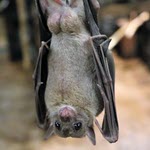
Cross-species potential of H9N2 bat flu
Nature Communications | ( 2024) 15:3449 29 April, 2024 In 2009–2010, the first bat-associated Influenza A virus (IAV) was discovered in an asymptomatic little yellow-shouldered bat (Sturnira lilium) in Guatemala. This new virus (A/bat/Guat/2009) has subsequently been classified as a separate subtype, A(H17N10). In 2010, another bat-associated influenza virus, A/bat/Peru/2010, was detected in asymptomatic New World flat-faced fruit bats (Artibeus planirostris) in Peru. This virus also could not be classified as any of the existing IAV subtypes, including A(H17N10), and was therefore classified as A(H18N11). Read MoreVertical transmission of Salmonella Reading
28 April, 2024 Recently, an unconventional serotype of Salmonella, S. enterica serotype Reading (S. Reading), emerged as a foodborne pathogen following a multistate outbreak in the US due to the consumption of contaminated turkey products. In response to this outbreak, the Centers for Disease Control (CDC) issued four recalls of turkey products, and the outbreak strain was found to be widespread at all levels of commercial turkey production, including live turkeys. However, no single supplier of raw turkey products or live turkeys was identified as accountable for the entire outbreak, and the CDC engaged the entire turkey industry to find solutions to end the public health event. Further studies on the outbreak strains revealed the emergence of a novel S. Reading turkey clonal group, plausibly vertically transmitted from breeders to progeny. Read MoreH5N1 avian influenza infects Colorado dairy cows
27 April, 2024 The USDA's Animal and Plant Health Inspection Service (APHIS) has announced the initial detection of the HPAI H5N1 virus in dairy cows in Colorado, marking the ninth state affected. Read More
Genetic traces of HPAI found in one in five milk samples across the USA
26 April, 2024 The FDA has received preliminary results from its nationally representative commercial milk sampling study. The initial findings indicate that approximately 1 in 5 of the retail samples tested are positive for HPAI viral fragments through quantitative polymerase chain reaction (qPCR), with a higher proportion of positive results observed in areas with infected herds. It's important to note that qPCR-positive results do not necessarily indicate the presence of actual virus that poses a risk to consumers. Further testing is required to determine whether intact pathogens are still present and if they remain infectious. Read MoreEarly vaccination boosts salmonella vaccine uptake in hens
Front. Microbiol., 15 January 2024 26 April, 2024 A recent study on the early vaccination of laying hens with a live bivalent Salmonella vaccine indicates that vaccinating hens earlier can optimize pullet protection. Live vaccines can be administered via drinking water from the first day of life, but some pullet-rearers choose to wait until the end of the first week to ensure sufficient water consumption. However, this practice leaves the birds unprotected during the crucial first week of life, when they are most susceptible to colonization by field strains. Read MoreUSDA protects consumers from Salmonella in raw breaded stuffed chicken
26 April, 2024 The U.S. Department of Agriculture’s (USDA) Food Safety and Inspection Service (FSIS) announced its final determination to declare Salmonella an adulterant in raw breaded stuffed chicken products when they exceed a specific threshold (1 colony forming unit (CFU) per gram or higher) for Salmonella contamination.This final determination is part of FSIS’ broader efforts to reduce Salmonella illnesses associated with the raw poultry supply in the United States. FSIS intends to address Salmonella contamination in other raw poultry products later this year.
Under this determination, FSIS will consider to be adulterated any raw breaded stuffed chicken products that include a chicken component that tested positive for Salmonella at 1 CFU per gram or higher. Read More
USDA's steps against H5N1 avian influenza in livestock
25 April, 2024 The USDA is sharing a number of actions to combat HPAI in dairy herds:Mandatory Testing for Interstate Movement of Dairy Cattle
• Prior to interstate movement, dairy cattle are required to receive a negative test for Influenza A virus at an approved National Animal Health Laboratory Network (NAHLN) laboratory.
• Owners of herds in which dairy cattle test positive for interstate movement will be required to provide epidemiological information, including animal movement tracing. Mandatory Reporting
• Laboratories and state veterinarians must report positive Influenza A nucleic acid detection diagnostic results in livestock to USDA APHIS.
• Laboratories and state veterinarians must report positive Influenza A serology diagnostic results in livestock to USDA APHIS. Read More
Vaccine efficacy in HPAI: A meta-analysis
One Health 18 (2024) 25 April, 2024 A systematic review and meta-analysis re-evaluate the efficacy of vaccines against highly pathogenic avian influenza (HPAI) virus in poultry. This study sheds light on the importance of vaccination in controlling HPAI outbreaks among poultry. The global spread of the HPAI A(H5N1) clade 2.3.4.4b virus since 2021 has had a significant impact on the need for re-evaluation of vaccination strategies. The spread of the HPAI virus has led to significant morbidity and mortality among domestic poultry, affecting the supply chain of poultry products and human food safety. Conventional control measures such as biosecurity and mass culling have been recognized as challenging and unsustainable in effectively controlling the spread of the virus. Read More
Avian Influenza: Rapid mortality in captive Bush Dogs in UK collection
bioRxiv 2024.04 23 April, 2024 A new study investigates a case of rapid mortality in captive bush dogs caused by avian influenza A (H5N1) at a wildlife collection in the United Kingdom. The study reveals that the unexpected detection of H5N1 as the causative agent led to a high mortality rate among the bush dog population, with severe systemic infection affecting multiple organs. Genomic analysis identified the H5N1 virus as the primary cause of death, highlighting the importance of understanding and monitoring zoonotic risks associated with avian influenza viruses in wildlife populations. Read MoreHuvepharma: Coccidiosis vaccine for turkeys receives conditional licensing
20 April, 2024 The United States Dept. of Agriculture’s Center for Veterinary Biologics has granted Huvepharma® a conditional license for the manufacturing and sale of a new turkey coccidiosis vaccine. The vaccine is the only USDA-approved vaccine with three species of Eimeria, the protozoan species that causes coccidiosis. It is sprayed onto day-old turkey poults in the hatchery. Read MoreEFSA: Avian Influenza vaccination: surveillance & mitigation measures
19 April, 2024 A new scientific opinion on the vaccination of poultry against highly pathogenic avian influenza (HPAI) was recently published by EFSA. This scientific opinion, authored by experts in the field, focuses on surveillance and mitigation measures to combat this disease in poultry populations.The article discusses poultry vaccination against HPAI and emphasizes surveillance and mitigation measures. Overall, it provides insights into the complexities of implementing vaccination programs and surveillance measures to combat HPAI in poultry, emphasizing the need for tailored approaches and continuous monitoring to prevent and control disease outbreaks. Read More
Avian influenza: Spreading
18 April, 2024 In a recent document from the US Department of Agriculture addressing 'questions and answers' regarding the spread of avian influenza in dairy herds in the US, there is an interesting reference to the issue of virus transmission. The Ministry of Agriculture states:1. The virus spreads within the herd through cow-to-cow infection.
2. There is evidence of virus transmission from infected cattle herds to poultry farms. Read More
HPAI H7N9 virus evolution amid vaccination
18 April, 2024 A new study by a Chinese research group, published in Emerging Microbes & Infections, delves into the evolution of the H7N9 highly pathogenic avian influenza virus within the context of vaccination, offering valuable insights into the genetic and biological changes of the virus in response to vaccination efforts. The study observes a gradual shift in the receptor-binding preference of H7N9 viruses in poultry, indicating an increased affinity for avian-type receptors and a decreased affinity for human-type receptors. Furthermore, the study finds that vaccination prevents reassortment with other viruses, thereby slowing the evolution of the virus.According to the authors, these findings suggest that vaccination plays a crucial role in shaping the evolution of the H7N9 virus, reducing its potential threat to human populations by eliminating its ability to bind to human-type receptors. Read More
South Dakota: HPAI detected in dairy herd
12 April, 2024 The South Dakota Department of Agriculture and Natural Resources (DANR) and the state's Animal Industry Board confirmed through testing the presence of highly pathogenic avian influenza (HPAI) in a dairy herd within South Dakota, marking a significant first for the state.With this detection among South Dakota dairy cows, the tally of affected states now stands at eight. Read More
North Carolina: HPAI detected in dairy herd
11 April, 2024 The North Carolina Department of Agriculture & Consumer Services (NCDAC) has reported that tests have identified highly pathogenic avian influenza (HPAI) in one of the state's dairy herds. This discovery brings the tally of affected states to seven. Previously, cases of HPAI had been confirmed in dairy herds in Texas, Kansas, Michigan, Idaho, New Mexico, and Ohio. As a precaution, the movement of cattle from affected herds in these states to North Carolina has been halted. Read MoreUK: Campylobacter report 2013-2022
9 April, 2024 2022-The number of reported Campylobacter cases in England decreased from 55,642 cases in 2021 to 54,461 cases in 2022, a decrease of 1,181 cases
-The region that reported the highest number of Campylobacter laboratory reports was the South East with 9,540 reports; however, the region with the highest rate per 100,000 population was the North East with 133.3 per 100,000.
-Overall, 54% of Campylobacter laboratory-confirmed cases in England were male the age group with the highest number of laboratory reports was the 50 to 59 year old age category.
-Consistent with previous years’ 5-year median, in 2022 Campylobacter reporting peaked in the month of June.
-Species was only reported for 23% of laboratory reports, the majority of which were Campylobacter jejuni (20% of all cases). Read More
Salmonella in poultry meat and products in Turkey
International Journal of Food Science and Technology 2024 8 April, 2024 A new study examines the prevalence, antibiotic susceptibility, and genomic characterization of Salmonella isolated from raw chicken meat and turkey products. The prevalence of Salmonella in poultry products in Turkey was found to be 38.22% in the study. Out of 293 chicken samples collected, 112 samples (38.22%) were contaminated with Salmonella enterica. Specifically, 4.46% of the isolates were identified as Salmonella Enteritidis, and 0.89% were identified as Salmonella Typhimurium. Read MoreVietnam: A novel reassortant influenza A(H5N1) virus
6 April, 2024 In the Greater Mekong Subregion (GMS), a novel reassortant influenza A(H5N1) virus has emerged since mid-2022, causing infections in both humans and poultry. Recently, this virus triggered human outbreaks in Cambodia at the beginning of this year. It carries surface proteins from clade 2.3.2.1c, which has been circulating locally, while its internal genes derive from a more recent clade 2.3.4.4b virus. The infiltration and widespread spread of this reassortant influenza A(H5N1) virus in the GMS pose significant threats to animal and human health, given the historical impact of Highly Pathogenic Avian Influenza (HPAI) outbreaks in the area. Moreover, this reassortment event underscores not just the adaptability of the virus but also the constant risk of the emergence of new, potentially more harmful strains. Read MoreCDC: sequencing results of H5N1 AI samples from patient
4 April, 2024 CDC has sequenced the influenza virus genome identified in a specimen collected from the patient in Texas who was confirmed to be infected with highly pathogenic avian influenza A(H5N1) virus and compared these with HPAI A(H5N1) sequences from cattle, wild birds and poultry.The virus sequences are HA clade 2.3.4.4b HPAI A(H5N1) with each individual gene segment closely related to viruses detected in dairy cattle available from USDA testing in Texas. While minor changes were identified in the virus sequence from the patient specimen compared to the viral sequences from cattle, both cattle and human sequences maintain primarily avian genetic characteristics and for the most part lack changes that would make them better adapted to infect mammals. Read More

Salmonella infections in Denmark from 2013 to 2022
3 April, 2024 A new study published in the European Journal of Clinical Microbiology & Infectious Diseases analyzed Salmonella infections in Denmark from 2013 to 2022, focusing on serotype distribution, invasiveness, age, sex, and travel exposure.The most prevalent non-typhoid Salmonella (NTS) serotypes identified in Denmark during the study period (2013-2022) were as follows:
1. S. Enteritidis: Accounting for 26.4% of cases
2. Monophasic S. Typhimurium: Responsible for 16.5% of cases
3. S. Typhimurium: Contributing to 13.5% of cases Read More
HPAI detected in Ohio dairy herd
3 April, 2024 The Ohio Department of Agriculture received confirmation from the United States Department of Agriculture’s (USDA) National Veterinary Services Laboratory (NVSL) of the detection of highly pathogenic avian influenza (HPAI) in a dairy cattle herd. This is the first case of HPAI in a livestock operation in Ohio. Read MoreTexas: HPAI in cats from affected dairy farms
3 April, 2024 Texas officials have reported that cats displaying signs of illness in dairy farm settings have tested positive for the virus. The Texas Animal Health Commission has confirmed in laboratory tests that three cats have contracted HPAI. Additionally, deceased grackles and pigeons were discovered at the same facilities, along with some farm cats. Read MoreUSA: Human case of H5N1 in Texas
2 April, 2024 A person in the United States has tested positive for the highly pathogenic avian influenza (HPAI) virus. The case was reported by Texas and confirmed by the Centers for Disease Control and Prevention (CDC). HPAI has now been confirmed in dairy herds in Michigan (1), Idaho (1), New Mexico (1), Kansas (2), and Texas (7).The patient became ill following contact with dairy cows presumed to be infected with avian influenza. Their primary symptom was conjunctivitis. Read More
HPAI in dairy herd in New Mexico
1 April, 2024 The USDA and APHIS has confirmed the detection of highly pathogenic avian influenza (HPAI) in a dairy herd in New Mexico, as well as 5 additional dairy herds in Texas.This marks the first known case of HPAI in cattle in New Mexico, and adds to the two detections in Texas that were first announced on Monday, March 25. To date, USDA has confirmed the detection of HPAI in dairy herds in Texas (7) Kansas (2), Michigan (1), and New Mexico (1). The presumptive positive test results for the Idaho herd are still pending analysis at NVSL. Read More
Campylobacter in broiler flocks in Norway 2023
30 March, 2024 Surveillance in 2023 showed that a total of 128 flocks (6.1%) tested positive for Campylobacter spp. when all broiler flocks slaughtered before 51 days of age during the period 1st of May –31st of October were tested. In total 2,100 flocks from 505 farms were sampled. Of all farms sampled, 83 (16.4%) had at least one positive flock, and of these, 28 had two or more positive flocks. The majority of the positive flocks comes from farms having more than one positive flock and even though these farms only represent 5.5% (28/505) of all farms tested, they contributed with 57.0% (73/128) of all positive flocks tested in 2023. Read MoreHPAI detected in Michigan dairy herd
29 March, 2024 Michigan Department of Agriculture and Rural Development (MDARD) Director Tim Boring announced the detection of highly pathogenic avian influenza (HPAI) in a dairy herd from Montcalm County. The U.S. Department of Agriculture’s National Veterinary Services Laboratories has confirmed this detection. Read MoreHPAI detected in Idaho cattle
29 March, 2024 The Idaho State Department of Agriculture (ISDA), has identified highly pathogenic avian influenza (HPAI) in a Cassia County dairy cattle operation. These are the first cases of HPAI in a dairy operation in Idaho. The affected facility recently imported cattle from another state that had previously identified cases of HPAI in cattle. It is suggested the virus may be transmitted from cow-to-cow, in addition to previous reports indicating cattle were acquiring the virus from infected birds. Read More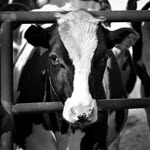
HPAI detected in Texas & Kansas dairy cattle
27 March, 2024 The U.S. Department of Agriculture (USDA), the Food and Drug Administration (FDA), and the Centers for Disease Control and Prevention (CDC) jointly reported the identification of highly pathogenic avian influenza (HPAI) virus in laboratory samples taken from multiple affected cows in Texas and Kansas.As of Monday, March 25th, unpasteurized clinical milk samples obtained from ailing cattle on two dairy farms in Kansas and one in Texas, as well as an oropharyngeal swab from another Texas-based dairy, have returned positive results for highly pathogenic avian influenza (HPAI). Read More
Salmonella Mbandaka ST413 outbreak in EU/EEA & UK
EFSA/ECDC 22 March, 2024 Since September 2021, a cross-border outbreak of Salmonella Mbandaka ST413 has persisted across the European Union/European Economic Area (EU/EEA) and the United Kingdom (UK), spanning over two years. By November 30, 2022, a total of 196 cases had been documented and outlined in a collaborative report by the European Centre for Disease Prevention and Control (ECDC) and the European Food Safety Authority (EFSA). As of March 15, 2024, the tally rose to 300 cases, marking an increase of 104 instances. These cases were distributed across Estonia (n=3), Finland (n=98), France (n=16), Germany (n=2), Ireland (n=7), the Netherlands (n=1), and the United Kingdom (n=173), as defined by European case standards. Among these cases, twenty-three required hospitalization, with six experiencing septicaemia, and tragically, one fatality was recorded in the UK. Read More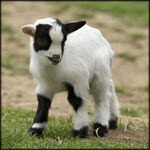
USA: H5N1 HPAI in a herd of goats
19 March, 2024 The Minnesota Board of Animal Health (MBAH) has reported the detection of highly pathogenic avian influenza (HPAI) in a young goat residing on a farm recently afflicted by an outbreak in poultry. Authorities, including the US Department of Agriculture (USDA), are currently probing the transmission of the virus within the farm premises situated in Stevens County, located in west-central Minnesota. As a precautionary measure, all animals on the farm have been subjected to quarantine. This discovery underscores the potential for cross-species infection within farms housing multiple animal types.The investigation was prompted by the observation of unusual mortality among newborn goats subsequent to the culling of poultry as part of the response to the February outbreak. Both the goats and the poultry shared common living quarters and water sources. Read More

Chilean H5N1 virus spreads fatal disease in ferrets
19 March, 2024 Highly pathogenic avian influenza A(H5N1) viruses from Clade 2.3.4.4b have triggered significant outbreaks among bird populations across five continents, with spill-over into various mammalian species. Instances of mutations linked to mammalian adaptation have sporadically surfaced in avian strains and more frequently in mammalian strains post-infection. Human infections with A(H5N1) viruses after contact with infected wildlife have been documented on multiple continents, underscoring the imperative for assessing pandemic risk associated with these viruses.In a recent study, the pathogenicity and transmissibility of the A/Chile/25945/2023 HPAI A(H5N1) virus were examined. This novel reassortment, incorporating four gene segments (PB1, PB2, NP, MP) from the North American lineage, was isolated from a severe human case in Chile. Read More
FSIS plans to exclude vaccine strains from salmonella performance categorization
14 March, 2024 The Food Safety and Inspection Service (FSIS) of the USDA has announced that live vaccine strains of Salmonella administered to flocks will be excluded from calculations used to determine the status of plants under the Raw Poultry Performance Standards. FSIS Salmonella performance standards are assessed on broiler carcasses, turkey carcasses, comminuted chicken, comminuted turkey, and chicken parts (81 FR 7285).FSIS examined Salmonella detection and serotype data from flocks vaccinated with a modified live Salmonella vaccine at pre- and post-intervention points in participating slaughter establishments. These data indicate that vaccine strains can occasionally be found in raw poultry products even when the vaccine is used as directed on the label. FSIS’ current policy of counting such strains as a positive result in performance categorization may discourage the use of vaccination as a tool to control Salmonella. Read More
Assessing Campylobacter control in chicken meat
14 March, 2024 In response to a request from the 52nd Session of the Codex Committee on Food Hygiene (CCFH), the Joint FAO/WHO Expert Meeting on Microbiological Risk Assessment (JEMRA) convened a meeting in Rome, Italy from 6 to 10 February 2023, to collate and assess the most recent scientific information relevant to the control of thermotolerant Campylobacter in broiler production and chicken meat. The scope was focused on aspects of broiler primary production from the point of chick placement into production establishments to consumer handling. The objectives were to identify and assess control measures for Campylobacter in the broiler production chain. The expert committee reviewed the available data on Campylobacter control including scientific literature published from 2008 to October 2022 and data submitted in response to a call for data for this meeting. Read MoreUSDA scientists develop technology for pathogen reduction in intact eggs
11 March, 2024 Researchers at the U.S. Department of Agriculture’s Agricultural Research Service (USDA’s ARS) have developed a thermal pasteurization method based on Radio Frequency (RF) technology that effectively reduces the presence of Salmonella in intact eggs. A simple solution to foodborne pathogens in eggs would be to pasteurize all raw eggs before consumption; however, less than 3 percent of commercial eggs are pasteurized in the United States. Conventional thermal pasteurization of intact eggs is usually a lengthy process involving submerging eggs in hot water for more than 57 minutes to inactivate Salmonella cells.Researchers at the Agricultural Research Service's (USDA-ARS) Eastern Regional Research Center in Wyndmoor, Pa., utilized a novel thermal technology to pasteurize eggs and inactivate Salmonella cells with a shorter processing time. Read More
Salmonella Infantis, an emerging human multidrug-resistant pathogen
Emerging Infectious Diseases | Vol 30, No. 4 - April 2024 11 March, 2024 Salmonella enterica serovar Infantis poses an ever-growing threat to public health due to its widespread presence across many countries and its association with high levels of antimicrobial resistance (AMR). A 167% increase in human infections was observed in the United States during 2001–2016, and in European Union member states, Infantis is the predominant serovar isolated from broiler flocks and broiler meat, accounting for 56.7% of Salmonella isolates from broiler meat in 2018. A recent study analyzed the whole-genome sequences of 5,284 Salmonella Infantis strains from 74 countries, which were isolated during the period of 1989-2020 from a diverse range of human, animal, and food sources. The study aimed to compare genetic phylogeny, AMR determinants, and the presence of plasmids. Read MoreEFSA: The role of mammals in Avian Influenza
10 March, 2024 Recently, there has been an increase in reported infections of avian influenza in mammals, spanning from asymptomatic cases to mass mortality events, and some human cases have also been recorded. Epidemiologically, there is great concern as evidence of mammalian adaptations to the virus has been found, yet the transmission routes and pathogenesis in mammals remain to be fully defined.A new report by EFSA aims to assess the role of mammals in avian influenza epidemiology, virology, and pathology, including avian influenza maintenance, reservoir role, immunity, and the potential role of mammals in a pandemic scenario.
According to the report, the most represented taxa were found within the order Carnivora. The primary identified risk of infection was through predation (or feeding) upon infected birds or through contact with avian species. Evidence of mammal-to-mammal transmission in the wild is currently only circumstantial and yet to be confirmed. Read More
An increase in Psittacosis cases in Europe
WHO 6 March, 2024 Five European countries have reported an increase in cases of Psittacosis, a bacterial respiratory disease known to originate from birds or poultry. The events began at the end of 2023 and led to the death of five people. The World Health Organization, in a detailed report, states that the reported events from Austria, Denmark, Germany, Sweden, and the Netherlands are mostly related to contact with wild or domestic birds.Sweden is the only country that made a change in the diagnostic processes, a factor that may explain the increase in the number of reported cases.
Psittacosis is caused by the bacterium Chlamydophila psittaci, which originates from birds or poultry. Human infection usually occurs through the respiratory tract. There have been previously reported cases of slaughterhouse workers being infected (1). Read More

Avian Influenza devastates seabird populations in the UK over two years
15 February, 2024 The current strain of Highly Pathogenic Avian Influenza (HPAI) H5N1 has significantly impacted UK wild bird populations since its first recorded instance in the country among Great Skuas in the summer of 2021, with seabirds and waterfowl being particularly affected. The scale of reported mortalities attributed to HPAI in the UK and across Europe in 2022 demonstrates that HPAI has emerged as one of the most significant immediate conservation threats faced by numerous seabird species, including some for which the UK population is globally significant. Many species affected by HPAI are of conservation concern in the UK. Read MoreWHO: Ducks source of H10N5 in Chinese woman coinfection
WHO 15 February, 2024 On 27 January 2024, the National Health Commission of the Peoples Republic of China notified WHO of one confirmed case of human coinfection with influenza A(H10N5) virus and seasonal influenza A(H3N2) virus. This is the first case of human infection with avian influenza A(H10N5) virus reported globally.The case occurred in a female farmer over 60 years of age from Xuancheng Prefecture, Anhui Province, who had onset of symptoms of cough, sore throat and fever on 30 November 2023. The patient, who had a history of chronic comorbidities, was admitted to a local hospital on 2 December 2023 for treatment and was then transferred on 7 December 2023 to a medical institution in Zhejiang Province as her condition became more severe. The patient was diagnosed with influenza A virus infection. She passed away on 16 December 2023. Read More
Current trends in mammalian infection patterns with HPAIv H5N1
Emerging Infectious Diseases | 2024 14 February, 2024 A comprehensive review of mammalian infections during the current panzootic period (2020-2023), compared to previous waves of infection (2003-2019), was recently published in EID. It highlights the expanded geographic reach and increased number of species affected by the current event, emphasizing the importance of continuous surveillance to mitigate the risk of a global pandemic.During the current panzootic period (2020-2023), the virus has affected a larger number of mammalian species worldwide compared to previous waves of infection. The current panzootic event has impacted a variety of mammalian species, including those classified as near-threatened, endangered, vulnerable, and critically endangered, potentially exacerbating their conservation status. The most likely source of mammalian infection appears to be close contact with infected birds, with some evidence suggesting potential mammal-to-mammal transmission. Read More
Salmonella in Europe - 2022
ECDC 9 February, 2024 In 2022, 30 EU/EEA countries reported 66,721 salmonellosis cases, of which 65,967 were classified as laboratory confirmed – a rate of 15.5 cases per 100 000 population.• Salmonellosis is the second most commonly reported gastrointestinal infection in the EU/EEA, and a significant cause of food-borne outbreaks.
• The reported case rate was highest in young children (0−4 years) with 81.5 cases per 100 000 population, ten times higher than in adults (25–64 years). The fact that the salmonellosis rate in young children was ten times higher compared with adults may be explained by a higher proportion of symptomatic infections among young children, an increased likelihood of parents taking children to see a doctor when sick, and increased likelihood of doctors taking samples. Read More
Campylobacter in Europe - 2022
ECDC 9 February, 2024 • Campylobacteriosis is the most commonly reported gastrointestinal disease in the EU/EEA.• In 2022, 30 EU/EEA countries reported 140,241 confirmed cases of campylobacteriosis.
• The overall EU/EEA notification rate was 46.9 cases per 100,000 population.
• The campylobacteriosis notification rate was highest in children under five years at 146.2 cases per 100,000 population.
• Thirty-five deaths from campylobacteriosis were reported in 2022, resulting in an EU/EEA case fatality rate of 0.04%. Read More
H10N3 Avian Influenza: A public health concern
2 February, 2024 In a correspondence published in The Lancet Microbe (1), it was reported that H10N3 viruses exhibit multiple amino acid residues associated with adaptation in mammalian hosts. Both human-derived and chicken-derived isolates demonstrated a high affinity for sialic acid-α-2,6-galactose receptors. Notably, certain chicken-derived viruses may possess the potential to evolve into a pandemic threat in the human population, bypassing the need for prior adaptation. Consequently, these characteristics underscore the potential public health threat posed by H10N3 avian influenza viruses. Read MoreFunding of €46.7 Million allocated to support Italian farmers from the EU
29 January, 2024 After receiving a favorable vote from Member States, the European Commission is set to allocate €46.7 million as compensation to Italian farmers residing in regions impacted by Highly Pathogenic Avian Influenza (HPAI) outbreaks. The funding for this compensation will be drawn from the agricultural reserve, and disbursements to farmers are scheduled to occur before September 30, 2024. Read MoreComparing European Campylobacter surveillance in broilers
Food Control 155 (2024) 28 January, 2024 European researchers compared various programs for Campylobacter control in broiler production across EU countries to identify the most promising practices for managing the pathogen. Mandatory surveillance, according to Campylobacter Process Hygiene Criterion (PHC), has been implemented by all twelve participating countries in accordance with Regulation (EC) No 2073/2005. This involves quantifying Campylobacter in neck skin samples and setting a limit for acceptable contamination of carcasses (<1,000 CFU/g). Variations are observed in Norway and Iceland, where weekly sampling is performed during peak infection periods only, and in Iceland, where the limit is set at 500 colony-forming units per gram (CFU/g) instead of 1,000 CFU/g. The PHC limit is 1,000 CFU/g in 15 out of 50 samples. Starting in January 2025, this limit will be applied to 10 out of 50 samples in all member states. Read MoreGermany: vaccination against HPAI viruses
26 January, 2024 After a prior decision permitting the utilization of vaccines to manage highly pathogenic avian influenza (HPAI) in the European Union under specific conditions, reports indicate that veterinary authorities in Germany are preparing to implement this measure.In Germany, the relevant authorities are in the process of incorporating the use of vaccines against HPAI through collaboration in a federal-state working group. The European Commission has enforced a significant shift in the strategy against avian influenza with the implementation of Implementing Regulation 2023/361/EU. Competent authorities can now authorize the vaccination of poultry against HPAIV, subject to stringent monitoring measures. This shift is attributed to the continuous circulation of HPAI viruses in migratory and increasingly domestic bird species, despite consistent Europe-wide control efforts. Currently, there is no regularly approved vaccine available for the prevailing HPAI viruses. Read More
S.D. Senators urge action on poultry trade and AI vaccines
25 January, 2024 Senators Mike Rounds (R-S.D.) and John Thune (R-S.D.) have penned a letter to Secretary of Agriculture Tom Vilsack and U.S. Trade Representative Katherine Tai, urging the initiation of discussions regarding the revision of trade agreements to potentially incorporate the use of a vaccine for highly pathogenic avian influenza (HPAI).The U.S. Department of Agriculture (USDA) is presently conducting trials for vaccines designed to prevent HPAI. The avian influenza outbreak has had a profound impact on over 5.3 million birds in South Dakota, resulting in a federal government expenditure of nearly $1 billion. Prior to permitting producers to employ any approved HPAI vaccine, U.S. officials must engage in negotiations with major trade partners. In late December, the World Organization for Animal Health (WOAH) issued a policy brief on poultry vaccination, emphasizing the need for a reassessment of existing control strategies due to the virus's rapid spread. The brief endorsed the use o Read More
UK 2022 retail surveillance: Campylobacter & Salmonella in raw chicken/turkey
24 January, 2024 Samples of raw fresh chicken (n=306) and turkey (n=302) were collected from retail premises across England, Scotland, Wales and Northern Ireland between January and December 2022. Salmonella spp. were detected in 1.9% (n=6/306) of chicken samples and 0.7% (n=2/302) of turkey samples, but the salmonella organisms were not ESBL producers. C. jejuni was the most common contaminant on both types of meat. High levels of contamination (>1000 cfu/g) were observed in 5.6% of chicken meat samples in total with 10.4% of whole chickens highly contaminated. Meat with skin was more likely to be contaminated with Campylobacter spp. than meat without skin with 21.8% of skinless chicken contaminated versus 60.3% of chicken samples containing skin. In turkey meat, 10.4% of samples with skin were contaminated whilst 1.6% without skin were contaminated. Read MoreCampylobacteriosis in Finland 2004-2021
24 January, 2024 A new study presents a comprehensive overview of passive surveillance on Campylobacteriosis in Finland from 2004 to 2021 and a pilot case-control study with whole-genome sequencing in summer 2022. According to the study:-Campylobacter is the most common cause of bacterial gastroenteritis in Finland. Read More

USDA allocates $1B to combat HPAI
17 January, 2024 Since the commencement of avian influenza outbreaks in early 2022, the USDA has allocated just over $1 billion to reimburse farmers for the loss of their flocks and to control the spread of the disease. The most substantial disbursement, amounting to $715 million, was distributed to producers, growers, and integrators as compensation for depopulated birds and eggs. An additional $183 million was utilized for the culling and disposal of affected flocks. The present costs associated with personnel, contractors, state agreements, and field expenses are estimated to be an additional $130 million. Read MoreHPAI detected in mammals in sub-Antarctica for the first time
12 January, 2024 Results confirm High Pathogenicity Avian Influenza (HPAI) has been found in elephant and fur seals on the subantarctic island of South Georgia.The presence of HPAI has been confirmed for the first time in mammals in sub-Antarctica. The disease was detected in elephant and fur seals on the island of South Georgia by experts from the UK’s world-leading Animal Plant Health Agency (APHA). HPAI was first suspected on Bird Island off the northwest coast of South Georgia in October 2023 after the deaths of several brown skua. Read More
FAO & WHO :Salmonella Control in Poultry Meat- meeting report
10 January, 2024 FAO and WHO have published a report on measures to control Salmonella in poultry meat. The expert consultation concluded the following:• At all levels of farm production, stringent biosecurity measures including sanitation and hygiene are important factors for preventing and controlling NT-Salmonella spp. in flocks.
• It is important for breeding flocks to be NT-Salmonella-free.
• Vaccine-based strategies reduce the prevalence and/or level of shedding of NT-Salmonella spp. in flocks but do not eliminate NT-Salmonella spp.
• There was no strong evidence that the use of substances with antimicrobial activity, such as additives in feed and water, resulted in effective control of NT-Salmonella spp. in broilers. Read More

Avian Influenza vaccination and safe trade
WOAH 8 January, 2024 A new policy article, titled "Avian Influenza Vaccination: Why It Should Not Be a Barrier to Safe Trade," published on the World Organization for Animal Health (WOAH) website, claims that the current spread of avian influenza is a major concern for the poultry industry, public health, and biodiversity. Given recent developments in its epidemiology and the increasing circulation of highly pathogenic avian influenza (HPAI) in wild animals, stricter biosecurity measures and mass culling of poultry may no longer be sufficient to control the disease. With the seasonal north-south migration of wild birds, countries must be prepared for an increase in outbreaks and should consider complementary approaches.The rapidly evolving nature of avian influenza and changes in its patterns of spread require a review of existing prevention and control strategies. To effectively contain the disease, protect the economic sustainability of the poultry sector, and reduce potential pandemic risks, Read More
France: An avian influenza outbreak in a vaccinated duck flock
7 January, 2024 French animal health authorities have identified an outbreak of avian influenza at a duck farm in Notre Dame de Riez. The affected birds had received vaccination in November 2023 as part of France's initial deployment of the poultry vaccine. The vaccine employed in this case is developed by Boehringer Ingelheim, utilizing Baculovirus Expression System Technology. This vaccine is a clade 2.3.2 H5-recombinant baculovirus vaccine. Confirmation of the outbreak's results came on January 2, prompting the culling of all 8,700 ducks on the farm. Read More
Avian influenza detected in polar bear in Alaska
4 January, 2024 The discovery of a deceased polar bear on Alaska's North Slope marks the initial instance of this species succumbing to the HPAI prevalent in animal populations worldwide. The unfortunate incident occurred in October near Utqiagvik, the northernmost community in the nation, as reported by the Alaska Department of Environmental Conservation. This marks the inaugural case of a polar bear falling victim to this ailment anywhere.The fatality of the polar bear highlights the enduring and lethal impact of the particular strain of HPAI that has gripped wild animal populations, persisting for two years since its introduction to North America. The initial cases of HPAI H5N1 in Alaska were identified in wildlife, including birds and a fox, during the second week of April. Read More










